ותמשא

דכ:ה ארקיו
All For Hashem
Rebbetzin Shira Smiles
Faculty, OU Israel Center
page 30
Revealing the Miracles

Rabbi Gideon Weitzman

Machon Puah
page 62

ותמשא

דכ:ה ארקיו
All For Hashem
Rebbetzin Shira Smiles
Faculty, OU Israel Center
page 30
Revealing the Miracles

Rabbi Gideon Weitzman

Machon Puah
page 62
Rabbi Avi Berman
08
10
Parshas Vayikra: Do You Care?
Rabbi Moshe Hauer
Aliya By Aliya Sedra Summary
Rabbi Reuven Tradburks
16The Victorious Victim
Rabbi Dr. Tzvi Hersh Weinreb
20The Pursuit of Meaning
Rabbi Lord Jonathan Sacks zt"l
24
Probing The Prophets
Rabbi Nachman Winkler
26Sacrificing With An Eye Toward the Future
Rabbi Shalom Rosner
30All For Hashem
Rebbetzin Shira Smiles
32Vayikra: The Calling Rabbi Judah Mischel
36Shemitah Wine For The Four Cups
Rabbi Ezra Friedman
40OU Israel Schedule
46Simchat Shmuel
Rabbi Sam Shor
50Time After Time
Rabbi Moshe Taragin
56Fighting a Good Fight
Rebbetzin Dr. Adina Shmidman
58Remedying An Enduring Flaw
Rabbi Aaron Goldscheider
62Revealing the Miracles
Rabbi Gideon Weitzman
64Shemitah Wine Guidelines for the Seder Night - Pesach Rabbi Moshe Bloom
66The Y- Files Weekly Comic Netanel Epstein
70תושפנ ארוב Rebbetzin Zemira Ozarowski
74OU-JLIC Noa Rogelberg
76Torah 4 Teens By Teens
Ian Schwartz // Ometz Shmidman
*Rabbi Daniel Mann's Dvar Torah can be found online at www.torahtidbits.com
Earliest Kiddush Levana, 3 Days After Molad 4 Nisan/ Sat. night March 25
7 Days After Molad 8 Nisan/ Wed. night March 29
Last Opportunity to Say Kiddush Levana until 14 Nisan/ Tues.night Apr. 4 All night
A Midrash, noted in the introduction to Sefer Ein Yaakov, discusses which pasuk in the Torah best sums up the fundamental principles of the Torah. The conclusion is, as Ben Pazi says, it is the pasuk (Shemot 29:39 – repeated almost exactly in Bamidbar 28:4): 'The one sheep you shall offer up in the morning and the other sheep you shall offer up in the afternoon.'
365 days of the year the sun rises at the start of the day, and sets at the end of the day, the birds fly in the sky, and two sheep are to be offered. So too, for 365 days of the year we must do mitzvot and for 365 days of the year we must daven. This photograph shows a bird flying in the sky over Tverya, as the sun was setting one day.

JERUSALEM
Ranges 11 days Wed - Shabbat
March 22- April 1/ 29 Adar - 10 Nisan
Earliest Tallit and Tefillin
Sunrise 5:41-6:28
Sof Zman Kriat Shema 8:35-9:35
Magen Avraham 8:07 - 8:59
Sof Zman Tefila 9:44 - 10:38
(According to the Gra and Baal HaTanya)
Chatzot (Halachic Noon) 11:46 - 12:43
Mincha Gedola (Earliest Mincha) 12:16 - 1:14
Plag Mincha
4:35 - 5:40
Sunset (Including Elevation) 5:56 - 7:02
Seymour J. Abrams • Orthodox Union Jerusalem World Center • Avrom Silver Jerusalem College for Adults • Wolinetz Family Shul • Makom BaLev • Birthright • Yachad • NCSY in Israel • JLIC in Israel • Pearl & Harold M. Jacobs ZULA Outreach Center • The Jack Gindi Oraita Program • OU Israel Kashrut
STUART HERSHKOWITZ, PRESIDENT OU ISRAEL
Zvi Sand / Yitzchak Fund: Former Presidents, OU Israel

| Rabbi Emanuel Quint z”l, Senior Vice President | Prof. Meni Koslowsky, Vice President
VAAD MEMBERS:
Dr. Michael Elman | Moshe Kempinski | Sandy Kestenbaum | Norman Schmutter | Esther Williams | Harvey Wolinetz
RABBI AVI BERMAN, EXECUTIVE DIRECTOR, OU ISRAEL
TImes According to MyZmanim (20 min. before sundown in most cities, 40 min. in Yerushalyim and Petach Tikva, 30 min. in Tzfat/Haifa)
OU Kashrut NCSY Jewish Action JLIC NJCD / Yachad / Our Way OU West Coast OU Press Synagogue/Community Services OU Advocacy OU Israel
MITCHEL R. AEDER, PRESIDENT OF THE ORTHODOX UNION Yehuda Neuberger, Chairman of the Board, Orthodox Union | Dr. Josh Penn, OU Kashrus Commission

RABBI MOSHE HAUER, EXECUTIVE VICE PRESIDENT | RABBI JOSHUA M. JOSEPH, ED.D. EXECUTIVE VICE PRESIDENT & CHIEF OPERATING OFFICER
Rabbi Dr. Tzvi Hersh Weinreb, Exec. V.P. Emeritus
OU KOSHER: Rabbi Menachem Genack, CEO/Rabbinic Administrator OU Kosher | Rabbi Moshe Elefant, COO/Executive Rabbinic Coordinator ISRAEL: Rabbi Yissachar Dov Krakowski, Rabbinic Administrator | Rabbi Ezra Friedman, The Gustave and Carol Jacobs Center for Kashrut Education/ Deputy Rabbinic Administrator
Headquarters: 40 Rector St. 4th floor, New York, NY 10006 212-563-4000 website: www.ou.org
Editor Emeritus: Phil Chernofsky
Editor: Rabbi Aaron Goldscheider | aarong@ouisrael.org
Advertising: Ita Rochel | 02-5609125 or ttads@ouisrael.org
Website: www.torahtidbits.com
Not getting enough TTs? Too many? None at all?
Contact our DISTRIBUTION 050-577-2111 • ttdist@ouisrael.org
David Katz, CFO, OU Israel | Chaim Pelzner, Director of Programs, OU Israel | Rabbi Sam Shor, Director of Programs, OU Israel Center Rabbi Sholom Gold, Dean, Avrom Silver Jerusalem College for Adults
22 Keren HaYesod <> POB 1441 <> Jerusalem
9101032
phone: (02) 560 9100 | fax: (02) 561-7432
email: office@ouisrael.org
website: www.ouisrael.org
Founders and initial benefactors of the OU Israel Center: George and Ilse Falk a"h
Torah Tidbits and many of the projects of OU Israel are assisted by grants from THE JERUSALEM MUNICIPALITY
OU Israel, Torah Tidbits does not endorse the political or halachic positions of its editor, columnists or advertisers, nor guarantee the quality of advertised services or products. Nor do we endorse the kashrut of hotels, restaurants, caterers or food products that are advertised in TT (except, of course, those under OU-Israel hashgacha). Any "promises" made in ads are the sole responsibility of the advertisers and not that of OU Israel, the OU Israel Center , Torah Tidbits.

As children of the Borei Olam (Creator of the World) we each have stories to share when we realized Hashem was watching over us. I have gained tremendous chizuk (strength) from stories I have heard when Hashem’s hand was clearly seen, and would like to share a story of my own. Exactly two years ago, I had an experience that helped me feel the presence of Hashem in my life, and it all started because of Shnayim Mikra which I said for this week’s parsha.
Shnayim Mikra derives its name from “Shnayim Mikra v’Echad Targum,” which means, “the text twice and the translation once.” This idea of reading each Torah portion twice in its original Hebrew, and once in the Targum (explanation), stems from a wellknown Gemara in Brachot that states:
“A person should always complete his [study of the] parsha with the congregation - [by studying] Shnayim Mikra v’Echad Targum. Anyone who does this will have
extended days and years.”
Shnayim Mikra requires review of the parsha, broken down into seven aliyot, which can be said on each day of the week leading up to Shabbat. Shnayim Mikra is part of my daily learning, which begins with the day’s Shnayim Mikra, followed by the Daf Yomi. Although it is a repetitive practice, I have found Shnayim Mikra to be a meaningful tradition in my life. Every year my latest experiences shape my perspectives and connection to the parsha, and I often find new concepts to relate to that I had not previously considered. But truthfully, Sefer Vayikra can be challenging in this area.
Throughout Sefer Breishit and Sefer Shemot, the Chumash takes a narrative tone and tells us the stories of the creations, our forefathers and foremothers, the Exodus from Egypt and receiving the Torah. In contrast, Sefer Vayikra focuses mostly on detailing mitzvot relating to the Mishkan and the Beit HaMikdash. It can
May the Torah learned in this
Torah Tidbits be תמשנ יוליעל
ל"ז הלרעמו ריאמ תב אלדנעה
ןסינ שדוח שאר ע"בלנ
In loving memory of Henny Hirsch z'l on her 9th yartzeit
Rosh Chodesh Nissan
קחצי ברה on his seventh Yahrzeit ןסינ 'ב
Pechman - Perlman - Weinberg Families
You are missed by us all
Your Daughter, grandchildren, great-grandchildren and friends







therefore be difficult to find ways to personally connect to the themes within, and yet my experience with this week’s parsha couldn’t have been more personal…
Two years ago I was admitted to Hadassah Ein Kerem for a kidney operation that was scheduled for an early Tuesday morning slot. Although prepped and ready to be brought into the OR, my operation continued to be delayed in order to accommodate emergency operations. Grateful to not be in an urgent situation I decided to use the time I had to learn.
I began with my daily seder, and reviewed Tuesday’s Shnayim Mikra for Parshat Vayikra, followed by the Daf Yomi. With further delays I decided to turn to Wednesday’s Shnayim Mikra in the event that I would be too weak to complete it the day after the operation. I couldn’t help but notice a theme in both the third and fourth aliyot…
Four times the verse say:
the two kidneys and the fat that is on them, that is at the loins; and the protuberance on the liver, which you shall remove with the kidneys.

two years since my kidney operation which Baruch Hashem went smoothly. I’d like to once again publicly thank Hashem for the miracle He did for me and for my health, the blessing of being with my family, and the ability to continue to serve Klal Yisrael. I remain grateful for the reminder of how closely I felt Him in those final minutes leading up to my surgery, and feel fortunate for the opportunities I have to connect to Torah each week and further my connection to the Almighty.
For those of you who interested in exploring Shnayim Mikra, I invite you to listen to the OU’s Shnayim Mikra series, with insights and commentary led by master educators including Rabbi Dr. Tzvi Hersh Weinreb, Rabbi Menachem Leibtag, Rabbi Yitzchak Etshalom, Rabbi Dr. Gidon Rothstein, and others. You can find more information here: https:// outorah.org/series/12/.
May we all feel the presence of HaKadosh Baruch Hu in our lives and be successful in our efforts to connect to Him.
Wishing you all an uplifting and inspiring Shabbat, Rabbi Avi Berman Executive Director, OU Israel aberman@ouisrael.org
Each time I uttered these words, I couldn’t help but feel that HaKadosh Baruch Hu was with me. I felt a sense of calm wash over me, and when I finally entered the OR, I did so with a deep feeling of faith. This year marks May
We miss you very much
The Rosner, Edelstein and Sokoloff families
In loving memory of our son, grandson and brother
Yehuda Aryeh Brand z”l
ל"ז דנרב הירא הדוהי on his 24th yahrzeit Rosh Chodesh Nisan


Our Parsha introduces us to the various offerings that were brought in the Temple, with extensive discussion about the korban chatas, the sin offering. These offerings were brought specifically for mistakes made, rather than for deliberate and malicious acts. Nonetheless an offering is required as an act of atonement – for a mistake!
Mistakes happen in a context. Simply put – we make mistakes when we are careless, not when we are careful. We can forget anything anywhere, but we are more likely to leave our worn raincoat on the train than our wallet because we care far more about the wallet than about the old coat. In this light, the concept of atonement for mistakes implies the expectation that we must truly care about doing things right in the realm of Torah and Mitzvos.
What matters to us most is not what others expect of us but what we ourselves value and are passionate about. As slaves in Egypt, we did absolutely nothing that we cared about. Our days were filled with Pharaoh’s priorities and with exercises in futility, such as building pyramids on quicksand. The freedom celebrated on Pesach brought us to a place where we could finally focus on
our greatest values and on G-d’s will, the greatest thing to be passionate about.
The freedom of Pesach is the freedom to really engage in what we care about.


It is fitting that the Yom Tov of Pesach is where the Halachic context promotes profound care for doing things right. We see this in the Torah obligation to free our entire home of the Chametz that we are not supposed to eat, in the Halachic notion unique to Pesach that even a tiny bit of Chametz, can render a mixture not kosher for Pesach, and in the widespread customs of Pesach home preparation that go beyond the basic Halachic requirements. Pesach is handled with the utmost care.
The ultimate symbol of this elevated care and conscientiousness is the Matzah itself. Matzah is made with care – ush’martem es hamatzos; and it is made with alacrity. Matzah baking is not a casual enterprise in any sense. And our Sages saw this as a paradigm for all Mitzvos, as the Sages played on the similarity between the Hebrew spelling of the words Matzos and Mitzvos and said that all Mitzvos should be performed with that same care and alacrity.
Not only to avoid mistakes, but to really get things right and make things happen, we need to care. When we are motivated by the issue and project at hand, when we are doing it not just because we have to, we are able to preserve our values and live a passionate life.
but you could possibly do them. For when it comes to communications from G-d, you are unique, irreplaceable, sui generis, one of a kind.
This exchange presents a fundamental principle of the Torah: that G-d speaks to Moshe in a way that He does not, nor will He in the future ever do again with anyone else. When Moshe says that people come to him seeking G-d, what he means is: I have access to G-d. He speaks to me. (Speaking to G-d isn’t the trick; the trick is when He answers back.) Similarly, when Moshe says that he teaches G-d’s law, what he means is that G-d communicates those laws to him and to no one else.
This could very well be the prime purpose of this Yitro story. For, in the very next story, the giving of the Torah, the very same theme of Moshe’s uniqueness as the one to whom G-d speaks is central.
3rd aliya (18:24-27) Moshe heard. He chose judges, with only the most difficult cases brought to him. Moshe sent Yitro home.

It takes an honest leader to accept suggestions to improve. Moshe displays his honesty and humility – if the suggestion is good, embrace it. Just as Yitro accepted the news of the Exodus and affirmed One G-d,





02-567-0602

Keren Malki empowers families of children with special needs in Israel to choose home care. Donations are tax-approved in Israel, US and UK.



Honoring the memory of Malka Chana Roth ד”יה 1985-2001, killed in the Sbarro bombing.


The theme of the parsha is sacrifices. Different offerings will be required in a variety of circumstances later in the book of Vayikra. This parsha outlines the rules of those offerings, so that when they come up later, their procedure will be familiar.
The parsha outlines the procedures for: Olah, a fully burned offering, Shlamim, an offering consumed by the Kohanim and by the owner, and a Chatat, a sin offering. In the course of those, the mincha, the flour offering is also described.
1st aliya (Vayikra 1:1-13) And He called to Moshe, and G-d spoke to him. When a person brings an Olah, it may be brought from cattle or sheep. If from cattle, the procedure is: the owner places his hands on the animal, it is slaughtered before G-d, the blood is sprinkled about the altar, the fats are burned and the entire offering is burned. If either sheep or goat, the same is done: slaughter same place, sprinkle blood, offer fats, and completely burned.
The first words of the parsha baffle the commentaries. No English teacher would allow a student to start a book “And He called to Moshe.” Who is the he? Nothing
has happened in the book yet that we can refer the he to. Why begin with “And He called”?
Clearly, the Torah is deliberately referring back to the previous story. And continuing it. At the end of Sh’mot the Mishkan was completed. The thick cloud descended, indicating G-d’s presence. Moshe could not enter the area of the Mishkan due to the cloud. G-d now beckons Moshe to enter, to teach the laws of offerings.
This interaction frames the book of Vayikra. In Sh’mot, G-d descended to us. He commanded the Mishkan, as a place to meet with us. He descended and filled the place. And now? Our turn. He approached us. Now we approach Him. In Sh’mot the Jewish people were passive, drawn to Him. Ordered to make a meeting place for G-d to meet us. Now, in Vayikra, the Jewish people are the active ones. This book then is a continuation of the last; there He approached us, here we approach Him. And that is the meaning of sacrifices; man approaching G-d.
2nd aliya (1:14-2:5) If the Olah is from birds, the procedure is similar: blood sprinkled, organs burned, and completely burned. If a nefesh shall bring a flour offering, the procedure is: the flour is mixed with oil and frankincense. The Kohen takes a finger’s full, burns it on the altar. The remainder is eaten by the Kohanim. The flour offering may also be baked or fried as a thin matza with oil.
The Olah offering is a sliding scale. Cattle, sheep, goat, birds, flour. While the heart may stir one to approach G-d, the pocket may demur. Rashi points out that when
describing the one who is bringing a flour offering, the least expensive one, the Torah uses the word nefesh, as if to say it is the soul that is bringing this inexpensive flour offering. For some, the flour offering is as big a sacrifice as the bull is to another.
3rd aliya (2:6-16) Or one may bring a fried soft flour offering.
and our next step will be to plant a fruit tree. I never thought of myself as being the agricultural type, but the feeling of settling and planting a portion of Eretz Yisrael, has been truly euphoric. Iy”H, when we plant our tree, and eat the fruits that will grow one day, I think we will be able to truly appreciate that unique Kedusha found in the fruit of Eretz Yisrael!
In each of these, the Kohen brings the mincha offering to the altar, offering a finger’s full. The remainder is eaten by the Kohanim, treated as holy of holies. No offering of this sort may be chametz or with honey. Only the first fruits offering contain chametz and honey. The Omer offering is from new barley of parched ground kernels with oil and frankincense.
How can we find meaning in sacrifices?
To conclude, when you buy your Tu B'shvat fruit this year, don’t search for those dried apricots and banana chips imported from Turkey. Rather, head over to the fresh produce and buy yourself some nice juicy Kedusha-filled Jaffa oranges and thank Hashem for bringing you to this land in order to be able to הבוטמ עבשלו הירפמ לוכאל, imbibing that Kedusha in every bite that you take!!
Let me offer the following.



In life, we experience a plethora of feelings and emotions. Success brings satisfaction; failure, disappointment. At times, we feel desperate, beaten down by challenges and uncertainty. Threats of war or of illness make us feel frantic. Sin can engender a deep sense of worthlessness. At other
times we feel exuberant, blessed, fortunate. That the sun has shone upon us. Gratitude, appreciation; hearts full.
Life is full of experiences of anxiety, of triumph and of disappointment. A sensitive soul needs to express itself; the religious soul needs to frame these emotions in relationship to G-d.
There are occasions outlined later in this book where offerings are required. And there are occasions when we offer these voluntarily.
An Olah is an offering that is completely burned. It expresses a complete submission to G-d. It is brought in a variety of contexts: communal offerings, individual obligatory offerings, voluntary. But whatever the context, it conveys resignation or submission. This is indeed a core attitude we have in our relationship with G-d. It can be paired with joy, with guilt, with appreciation – but resignation and submission form the root of our religious experience. So when an Olah offering is brought it can be an expression of profound appreciation, but conveying that appreciation with resignation: that it is not my hands that have wrought my success, but that I as a Jew am charged with living hand in hand with G-d. My success demands an expression to G-d, as does my desperation. I give my life wholly to Him – both my success and my despair. This complete resignation is expressed in the olah – an offering completely burned. As if to say, I am in Your hands.
4th aliya (3:1-17) The Shlamim offering may be brought from cattle. The owner places his hands on the head, the Kohanim take the blood after slaughter and sprinkles on the
altar, the fats are burned. If it is brought from sheep, the same procedure is followed. Or if brought from goats. An eternal law is that no blood or fats may be eaten.
The Shlamim is eaten by the owner along with the Kohen; not totally burned as is the Olah. As such, it expresses a partnership between man and G-d. It has a mood of celebration. Perhaps the joy that at a certain level, while submissive to G-d we also partner with Him. There is complexity in human experience, combining both submission and partnership.
5th aliya (4:1-26) When a nefesh sins: if the Kohen sins in his official capacity, he brings a Sin offering of a bull. The Kohen places his hands on the head, the Kohen sprinkles the blood toward the curtain of the Holy of Holies and on the incense altar. The fats are burned. The bull is burned outside of the holy area, where other ashes are deposited. If the entire people err in committing a sin, a bull is brought as a sin offering. The elders rest their hands on the head of the animal, the Kohanim sprinkle the blood in front of the Holy of Holies and on the incense altar. Its fats are burned and the bull is burned outside of the holy area as was the Kohen’s sin offering. When the Ruler inadvertently commits a sin, he brings a goat. He places his hands on its head, the Kohanim place the blood on the altar corners and its fats are burned.
This aliya describes 3 sin offerings brought by leaders: the Kohen, the Sanhedrin when it makes a ruling that all the people follow and that they realize was in error, and the King. True leaders must recognize that though they are higher than the
been memorialized in a popular song, "An eternal people does not fear the long and arduous path."
be in loving memory and נ"על our dear parents whose yahrtzeits are in Kislev
Doris Weinberger a"h
ולסכ 'ד -ה"ע המלש לאקזחי תב האל הרובד

Max Weinberger z”l
rest of the people in their roles, they remain subservient to G-d. Papal infallibility is not a Jewish notion; here we assume that the Kohen (the religious leader), the Sanhedrin, (the judiciary) and the King, the political leader will all sin. And admit their sins.
ולסכ ז"כ -ל"ז בד ןב ךלמילא
Greatly missed by their children, grandchildren and great grandchildren



Rav Aryeh and Dvora Weinberger
Bernie and Leah Weinberger
Patience is necessary for those who follow Isaac's way. But a wise woman taught us that patience is but another name for hope. That woman was Jane Austen, who put these words into the mouth of one of the characters in her great novel, Sense and Sensibility: "Know your own happiness. You want nothing but patience—or give it a more fascinating name: call it hope."
Menachem and Hannah Katten
In observance of the Shloshim of our friend
Yehuda Leib Berren z"l
Rav Menachem Weinberg will give a shiur in his memory "Heroic Joy"
Monday evening, 23 November/ 8 Kislev
7:30pm
Zoom Meeting: 853 8980 1519
Password: Yehuda
6th aliya (4:27-5:10) If a person sins inadvertently, he brings a goat as a sin offering. He places his hands on the head, the blood is placed on the corners of the altar, the fats are burned. He may bring a sheep; the procedure is similar. An Asham sin offering is brought for: withholding testimony resulting in an oath taken unnecessarily, unknowingly violating the laws after becoming impure, taking an oath unnecessarily. A confession is made. The offering may be brought from sheep or goats. If the owner cannot afford these, then he may bring 2 birds, one an olah and one a sin offering.
It is crucial to note that the sin offering is not the first sacrifice in the descriptions of offerings. It is the 3rd, following the Olah and the Shlamim. Sacrifices are not brought only to atone for sins. And not all sins can be expiated through sacrifices. Some do not rise to the need for a sacrifice. And for some, a sacrifice does not suffice for atonement. The offerings rather span the gamut of human experience and more accurately express a desire to engage G-d in all sorts of experiences, not just when needing atonement.
7th aliya (5:11-25) And if he cannot afford these, then he may bring a flour offering, though without oil or frankincense, as this is a sin offering, an Asham. A finger’s full is brought
on the altar; the Kohanim consume the rest. If a person uses sanctified property, he needs to bring a ram to atone as an Asham. And to compensate the holy fund with a 1/5 additional penalty. If a person is unsure of a sin, he needs to bring a ram to atone as an Asham. If a person denies a financial obligation and swears falsely, he must make restitution with an additional 1/5 and to bring a ram to atone.
These offerings are required to be brought to the Mishkan and later, to the Temple in Jerusalem. The experience of the grandeur of those places would generate humility. Healthy humility, knowing our place as both majestic beings and meek in His presence is generated by the experience of sacrifice in the holy place.
YESHAYAHU 43:21- 44:23
This week’s parsha focuses exclusively on the sacrifices brought in the Mishkan. Related
to this theme, this week’s haftorah starts with a rebuke to the people of Israel for abandoning the service in the Beit Hamikdash.
The message which is conveyed from the prophet Yeshayahu are words of rebuke related to the Israelites turning away from dedicating their lives to God and turning to idolatry instead. The Almighty calls to his people to do teshuva and He promises that their transgressions will be forgiven.
Yeshayahu exhorts the people by mentioning to them that serving idols is merely serving an object crafted by an artisan and has no power - “neither see nor hear nor do they know…”
The conclusion of the haftorah states God’s overwhelming desire that His beloved people remember Him and return to Him.
Mazal Tov to Dr. Harvey & Rivka Woolf and family on the marriage of their daughter
BY RABBI CHANOCH YERES R av, Beit Knesset Beit Yisrael, Yemin MosheRabbi Shlomo Ephraim Luntscitz (1550-1619, Rav of Prague) in his commentary on the Torah, the Kli Yakar, was puzzled by the second pasuk of this Parsha. (ב:א) םכנברק תא ובירקת ןאצה ןמו המהבה ןמ ’הל ןברק
“When any man of you offers an offering unto G-d, of cattle, of the herd, or of the flock, you shall bring your offering.” (1:2)
Why does the verse begin with the singular (adam ki takriv- any man) yet ends in the plural Takrivu- You shall bring?
The Kli Yakar answers that the language is to warn those who will bring a sacrifice, not to err the same way as Kayin and Hevel, when they offered to G-d, at the beginning of the Torah.
Kayin failed to bring from live animals. Instead, he brought from simple plant life- flax or wheat. Therefore, the verse stresses “from the cattle and from sheep” you shall bring. If one is to ask for atonement for his sins, he should offer a live animal- a lesson meant for the masses- therefore the plural form is used.
Kayin erred when he decided to bring an offering only after seeing Kayin’s offering. His motive was due to jealousy of what his brother was doing. Therefore, the beginning of the verse is in the singular –”When a person (Adam) brings an offering” it is to teach us that we should model Adam HaRishon who offered to G-d with the correct intentions for the sake of Heaven, since there was no one else to be jealous of, at that time.
Shabbat Shalom
24th of 54 sedras; 1st of 10 in Vayikra
Written on 215 lines in a Torah, rank: 19
21 Parshiot; 13 open, 8 closed
111 p’sukim - rank: 26 (2nd in Vayikra)
Same number of p’sukim as Eikev
1673 words - rank: 20 (1st in Vayikra)
6222 letters - rank: 20 (1st in Vayikra)
The sedra is of average length, but its p’sukim are longer than average for the Torah.
16 mitzvot; 11 positive, 5 prohibitions

The book of Vayikra has the largest number of mitzvot among the five Chumashim - 247, 40% of Taryag. On the other hand, Vayikra is the shortest
Book by far - in number of columns and lines in a Sefer Torah, number of p’sukim, words, and letters. This makes the mitzvah stats even more impressive.
OLD KATAMON
* Exclusive! New! 160 sqm, 4 bdrms, 3 bathrooms, garden, storage, parking, close to the Shtibelach. Occupancy within 1.5 years
*125 sqm, priv. entrance 3 exp. NIS 4,300,000
SHAAREI CHESSED / RECHAVIA
1) Renovated 110 sqm 3 bdrms, 1st floor, succah.
2) Beautiful 3 bdrm apt + 50 sqm succah balcony, shabbat elevator, parking and view.

3) New 228 sqm duplex penthouse, 30 sqm succah balcony, shabbat elevator, parking and a view.
GERMAN COLONY
2 bdrms, 2 bathrooms, succah+ roof terrace.
TALPIOT
4 rms, balcony, elevator, machsan, parking, view.
NACHLAOT
Renovated 2 rms, private entrance, storage room, NIS 2,350,000
FOR RENT
BAKA– Spacious 2 bdrms, 2nd floor, furnished, succah balcony, private parking, immediate. NIS 6500
FOR MANY MORE PROPERTIES: 02-651-4030


I always experience a sense of excitement when I begin a new book. I am convinced that most avid readers feel the same way. This Shabbat gives us an opportunity to experience that excitement as we begin a new book, the book of Leviticus, and Parshat Vayikra.
The book, or chumash, of Leviticus has historically had “mixed reviews.” On the one hand, our tradition reveres this book, calling it Torat Kohanim (the Torah, or Teachings, of the Priests). The dominant theme of Leviticus is the role of the priests within the various rituals connected to worship in the Holy Temple, and their role in various rituals associated with purity and holiness.
So special a place does Leviticus have in our tradition that there was once a time when schoolchildren began their study of
the Bible with this very holy book. “Let those who are pure and holy be involved in the study of purity and holiness.”
In more recent times, however, Leviticus has become a “victim” of negative criticism. I remember participating in a protest against a publisher who planned an anthology of inspiring biblical texts but deliberately omitted Leviticus from the table of contents. He felt that most of the book was irrelevant and outdated. Only instead of using the term “outdated,” he called it “primitive.” Those of us who protested his omission adduced many passages in Leviticus that were not only relevant, but of great import to contemporary society—but to no avail. I realized how futile our protest was when he asserted that the verse, “Love your neighbor as yourself,” couldn’t have been part of the original text of Leviticus but must have been inserted centuries after the book was first written.
Of course, the source of this publisher’s bias traced back to the early school
of biblical criticism, which assigned the “author” of Leviticus the title “P,” standing for “Priestly Code”. These critics maintain that the entire book of Leviticus was written much later than the rest of the Bible. As a believing Jew, I disassociate myself entirely from this school and its theories.
It was at one of the public lectures of Rabbi Joseph Soloveitchik that I heard him say that we have a standard by which to assess the sanctity and importance of those matters that we consider holy. “The more virulent the opposition to one of our beliefs, the more sacred and important we can consider that belief to be.” He offered two examples of this phenomenon. One was the book we begin to read this Shabbat, which some so-called “Bible scholars” consider inferior to other books of the Bible. This antagonism, argued Rabbi Soloveitchik, is in and of itself sufficient to convince us that Leviticus, Chumash Vayikra, is especially important. As a second example, he pointed to the State of Israel, which already in his time—forty or so years ago—faced extreme hostility in the international arena. This very hostility, he insisted, demonstrates the State of Israel’s essential importance.
Viewing the entire book of Leviticus as a “victim” of misunderstanding and defamation provides an opportunity for us to consider the very relevant lessons the book may actually have for the nature of victimhood. As I hope to demonstrate, our tradition has many lessons to teach us about the relationship between the perpetrator and the victim, between the pursuer and the one he pursues.
Many of those lessons are rooted not only in the book of Leviticus, but in this week’s


Torah portion, Vayikra. But first, let me share with you a verse from another biblical book that has had its share of detractors over the centuries, the book of Kohelet (Ecclesiastes):
“What is occurring now occurred long since,
And what is to occur occurred long since: and God seeks the pursued.” (Kohelet 3:15)
In this verse, King Solomon, the author of Kohelet, maintains that history is cyclical. Today’s events and future events have their precedents in the past. One aspect of this repetitive narrative is consistent and predictable: God seeks the pursued. God is on the side of history’s victims, and ultimately it is they who will prevail. Here is how the Midrash expands upon this concept:
“Rabbi Huna said in the name of Rabbi Yosef, ‘God always seeks the pursued. You will find that when one righteous person pursues another righteous person, God sides with the pursued. When a villain pursues a righteous person, God sides with the pursued. When one villain pursues another villain, God sides with the pursued. Even when a righteous person pursues a villain, God sides with the pursued! In every case, God sides with the pursued!” (Vayikra Rabbah 27:5)


This Midrashic passage continues to offer
examples throughout history of this principle: Abel was pursued by Cain, and God chose Abel. Noah was pursued by his society, and God favored Noah. Abraham was pursued by Nimrod, Isaac by the Philistines, Jacob by Esau, Joseph by his brothers, Moses by Pharaoh, David by Saul, Saul by the Philistines. In each and every instance, God favored the pursued and eventually vanquished the pursuer. So too, the Midrash assures us, although the people of Israel have been pursued by enemy nations throughout their history, God will seek the pursued. He will favor the victim.
The Talmud takes this theme one step further, recommending that we consciously strive to be among the pursued and not join the pursuers. “Rabbi Abahu preached that one should always include himself among the pursued, and never among the pursuers, for, after all, no species of fowl is more pursued than pigeons and turtle doves, and yet these are the only species of fowl that are fit for the altar.” (Bava Kama 93a)
Maimonides includes Rabbi Abahu’s advice in his description of the proper demeanor of the Torah scholar, the talmid chacham: “His guiding principle should be to include himself among the pursued but not among the pursuers. He should be
one of those who forgives insult but never insults others.” (Hilchot De’ot 5:13)
Do not be misled. Joining the pursued does not mean that one should be a pushover, a “nebbish.” The Torah encourages us to stand up for ourselves and defend ourselves vigorously when necessary. Rather, joining the pursued means that we do not always need to win, that we give others credit and allow them the limelight. We join the pursued when we are careful not to trample others competitively in order to get ahead, but we work collaboratively with them. Those are the qualities that are blessed by the God who seeks the pursued.
The 19th century commentator and rabbinic authority, Rabbi Jacob of Lyssa, offers a brief insight into the verse of our focus in this column, “God seeks the pursued.” He points out that in a certain sense we are all “pursued.” Every human being is pursued by his or her passions, moral failings, and selfish egos. Part of man’s existential condition is that he is pursued by evil urges. God seeks the pursued, offering succor to all those who valiantly struggle to overcome their internal temptations and strive to live an ethical and moral life.
As individuals, as a people, and as human beings, we often are fated to be victims. Still, our Sages see in this week’s Torah portion the lesson that we can be victorious victims.

LOOKING FOR a Jerusalem Hebrew-speaking volunteer to mentor a 35-year-old man in drug recovery.

For more information:


Menachem Persoff:
050-570-1067
May the learning of these Divrei Torah be תמשנ יוליעל HaRav Ya'akov Zvi ben David Arieh zt"l

The American Declaration of Independence speaks of the inalienable rights of life, liberty, and the pursuit of happiness. Recently, following the pioneering work of Martin Seligman, founder of positive psychology, there have been hundreds of books published on happiness. Yet there is something more fundamental still to the sense of a life well lived, namely, meaning. The two seem similar. It’s easy to suppose that people who find meaning are happy, and people who are happy have found meaning. But the two are not the same, nor do they always overlap. Happiness is largely a matter of satisfying needs and wants. Meaning, by contrast, is about a sense of purpose in life, especially by making positive contributions to the lives of others. Happiness is largely about how you feel in the present. Meaning is about how you judge your life as a whole: past, present, and future.
Happiness is associated with taking, meaning with giving. Individuals who suffer stress, worry, or anxiety are not happy, but they may be living lives rich with meaning. Past misfortunes reduce present happiness, but people often connect such moments with the discovery of meaning. Furthermore, happiness is not unique to humans. Animals also experience contentment when their wants and needs are satisfied. But meaning is a distinctively human phenomenon. It has to do not with nature but with culture. It is not about what happens to us, but about how we interpret what happens to us. There can be happiness without meaning, and there can be meaning in the absence of happiness, even in the midst of darkness and pain.1
In a fascinating article in The Atlantic, “There’s More to Life Than Being Happy,”2 Emily Smith argued that the pursuit of
1 See Roy F. Baumeister, Kathleen D. Vohs, Jennifer Aaker, and Emily N. Garbinsky, “Some Key Differences between a Happy Life and a Meaningful Life,” Journal of Positive Psychology, vol. 8, issue 6 (2013): pp. 505–16.
2 Emily Smith, “There’s More to Life Than Being Happy,” The Atlantic, 9 January 2013.
happiness can result in a relatively shallow, self-absorbed, even selfish life. What makes the pursuit of meaning different is that it is about the search for something larger than the self.
No one did more to put the question of meaning into modern discourse than the late Viktor Frankl, who has figured prominently in these essays on spirituality.3 In the three years he spent in Auschwitz, Frankl survived and helped others to survive by inspiring them to discover a purpose in life even in the midst of hell on earth. He knew that in the camps, those who lost the will to live died. It was there that he formulated the ideas he later turned into a new type of psychotherapy based on what he called “man’s search for meaning.” His book of that title, written in the course of nine days in 1946, has sold more than ten million copies throughout the world, and ranks as one of the most influential works of the twentieth century.
Frankl used to say that the way to find meaning was not to ask what we want from life. Instead we should ask what life wants from us. We are each, he said, unique: in our gifts, our abilities, our skills and talents, and in the circumstances of our life. For each of us, then, there is a task only we can do. This does not mean that we are better than others. But if we believe we are here for a reason, then there is a tikkun, a mending, only we can perform; a fragment of light only we can redeem; an act of kindness, or courage, or generosity, or hospitality only we can perform; even a word of encouragement or a
Jerusalem Real Estate is My Business

Eta: 054-723-3863 Rachel: 052-546-6425
Amazing stand alone homes in OLD KATAMON, TALBIYA, BAKA, GERMAN COLONY
Fantastic opportunity to buy 170 sqm on one floor, with sukka terrace, Shabbat elevator, brand new apt ready in 2 years. Only 6,500,000 NIS.
In GERMAN COLONY, 140 sqm on one floor, 2nd floor walk up, completely renovated with 4 bedrooms and 2 full bathrooms. Large sukka terrace.
7,100,000 NIS
BAKA Penthouse. Across from BAKA. 154 sqm on one floor with 4 bedrooms and 2 full bathrooms. Shabbat elevator

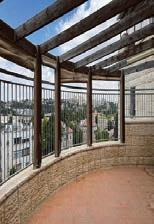


2 underground parking and 3 storage units!!!
25 sqm Sukka terrace off living room plus large roof top terrace. NEW PRICE!
5,950,000 NIS
In the heart of BAKA enclosed in a magical courtyard:
3 bedrooms 2 full bathrooms one flight up. Beautiful spacious sukka terrace facing open gardens. Completely renovated with architectual design & high level finishes.
6,250,000 NIS
Eta Morris Realty, Ltd.

etamorrisrealestate@gmail.com
3 See in particular the essay from earlier in this series for entitled “Reframing.”
Eta: 054-723-3863 · Rachel: 052-546-6425
etamorrisrealty.co.il
smile only we can give, because we are here, in this place, at this time, facing this person at this moment in their lives.
“Life is a task,” he used to say, and added, “The religious man differs from the apparently irreligious man only by experiencing his existence not simply as a task, but as a mission.” He or she is aware of being summoned, called, by a Source. “For thousands of years that source has been called God.”4
That is the significance of the word that gives our parsha, and the third book of the Torah, its name: Vayikra, “And He called.” The precise meaning of this opening verse is difficult to understand. Literally translated it reads: “And He called to Moses, and God spoke to him from the Tent of Meeting, saying….” The first phrase seems to be redundant. If we are told that God spoke to Moses, why say in addition, “And He called”? Rashi explains as follows:
And He called to Moses: Every [time God communicated with Moses, whether signalled by the expression] “And He spoke,” or “and He said,” or “and He commanded,” it was always preceded by [God] calling [to Moses by name].5
“Calling” is an expression of endearment. It is the expression employed by the ministering angels, as it says, “And one called to the other” (Isaiah 6:3).
Vayikra, Rashi is telling us, means to be called to a task in love. This is the source of one of the key ideas of Western thought, namely the concept of a vocation or a calling,
that is, the choice of a career or way of life not just because you want to do it, or because it offers certain benefits, but because you feel summoned to it. You feel this is your meaning and mission in life. This is what you were placed on earth to do.
There are many such calls in Tanach. There was the call Abraham heard to leave his land and family (Gen. 12:1). There was the call to Moses at the burning bush (Ex. 3:4). There was the one experienced by Isaiah when he saw in a mystical vision God enthroned and surrounded by angels:
Then I heard the voice of the Lord saying, “Whom shall I send? And who will go for us?” And I said, “Here am I. Send me!” (Is. 6:8)
One of the most touching is the story of the young Samuel, dedicated by his mother Hannah to serve in the sanctuary at Shiloh where he acted as an assistant to Eli the priest. In bed at night he heard a voice calling his name. He assumed it was Eli. He ran to see what he wanted but Eli told him he had not called. This happened a second time and then a third, and by then Eli realised that it was God calling the child. He told Samuel that the next time the voice called his name, he should reply, “Speak, Lord, for Your servant is listening.” It did not occur to the child that it might be God summoning him to a mission, but it was. Thus began his career as a prophet, judge, and anointer of Israel’s first two kings, Saul and David (see I Samuel 3).
4 Viktor Frankl, The Doctor and the Soul: from Psychotherapy to Logotherapy (New York: A. A. Knopf, 1965), p. 13.
5 Rashi on Leviticus 1:1.
When we see a wrong to be righted, a sickness to be healed, a need to be met, and we feel it speaking to us, that is when we come as close as we can in a post-prophetic age to hearing Vayikra, God’s call. And why
does the word appear here, at the beginning of the third and central book of the Torah? Because the book of Leviticus is about sacrifices, and a vocation is about sacrifices. We are willing to make sacrifices when we feel they are part of the task we are called on to do.
From the perspective of eternity, we may sometimes be overwhelmed by a sense of our own insignificance. We are no more than a wave in the ocean, a grain of sand on the seashore, a speck of dust on the surface of infinity. Yet we are here because God wanted us to be, because there is a task He wants us to perform. The search for meaning is the quest for this task.
Each of us is unique. Even genetically identical twins are different. There are things only we can do, we who are what we are, in this time, this place, and these circumstances. For each of us God has a task: work to perform, a kindness to show, a gift to give, love to share, loneliness to ease, pain to heal, or broken lives to help mend. Discerning that task, hearing Vayikra, God’s call, is one of the great spiritual challenges for each of us.
How


Some years ago, in To Heal a Fractured World, I offered this as a guide, and it still seems to me to make sense: Where what we want to do meets what needs to be done, that is where God wants us to be.
These weekly teachings from Rabbi Sacks zt”l are part of his ’Covenant & Conversation’ series on the weekly Torah teaching. With thanks to the Schimmel Family for their generous sponsorship, dedicated in loving memory of Harry (Chaim) Schimmel. Visit www.RabbiSacks.org for more.




This opening parasha of Sefer Vayikra serves as a logical continuation of the final parshiyot of Sefer Shmot that we read last week. After detailing the precise construction of the Mishkan the Torah now describes for us the service that was to take place there. To the modern-day mind, the world of, animal sacrifice, seems quite foreign and difficult to comprehend. Nonetheless, the sacrificial rite is the focus of the Torah for the bulk of Sefer Vayikra and is also a topic often discussed by our nevi’im. However, it was essential for the people to understand that the ritual offerings were, primarily, means to an end-not an end in themselves.
For this reason, the haftarah read on Shabbat VaYikra, the parasha that introduces the laws of korbanot, is a critique leveled by Yishayahu against Israel who deviated from the essence of the sacrificial rite and regarded it instead as a simple act that would erase all their sins. For this reason, the navi opens his message with the words: “Am zu
yatzarti li”, “I, [G-d] fashioned this people”, “tehillati y’sapeiru”, “SO THAT they will tell My praise.” The very purpose of choosing Israel and redeeming them time and time again, was so that they would spread His praise by teaching the world of G-d’s greatness through their service to Him. The prophets understood that the sacrificial rite would be a means to educate a pagan world of the need to worship One G-d. Making offerings to a non-corporeal divinity – and ONLY this non-corporeal divinity – was a unique enough practice in ancient times to have other nations take notice and learn.
It was through the korbanot, therefore, that the Jewish nation would be able to fulfill the mission it was created for: to spread the belief of the One G-d to all nations. Indeed, this was the request made by Shlomo HaMelech at the inauguration of the First Temple (Sefer M’lachim A: 8; 41-43), i.e. to have foreigners come to the Bet HaMikdash and bring sacrifices to G-d. The people failed to regard their offerings as a means to draw closer to Hashem (and, thereby, receive His atonement), AS WELL AS a tool to educate the idolatrous populations. Instead, Israel saw the ritual simply as an end – a ritual that would automatically have their own iniquities erased, and, by doing so, the nation undermined the very purpose of offering korbanot - “Am zu yatzarti li, tehillati y’sapeiru”
Given Israel’s misuse of the sacrifices, and,
upon Churban Bayit, the resultant termination of the ritual service, we are forced to face the “elephant in the room”: How can we now effect atonement for our sins?
Rav Soloveitchik addresses this very question and, in his usual brilliance, helps us understand how we are forgiven. After quoting R. Akiva’s post-churban statement (Mishna Yoma 8;9) that it is G-d Himself Who purifies us from our sins the Rav comments:
The attainment of kapparah will not be as… complete as when….the High Priest brought man into contact with transcendent and incomprehensible divinity. But we Jews have brought another message of teshuva to Man, that of tahara [purification]. There is nothing transcendent [or] miraculous…about tahara. The performance of tahara is not directed at a transcendent divinity but at G-d, as our father, companion and intimate counselor. For this communion with G-d, man has not been affected by the loss of outward ceremonial rites.
For over 2,000 we have been bereft of sacrifices and offerings, and, as a result, we no longer have the complete kapparah we once had when the Kohen Gadol would follow the Yom Kippur ritual service in the Beit HaMikdash. But, it is also true that, for over 2,000 years, we have been purified by our Father in heaven. Our challenge today, therefore, is to understand the true purpose of korbanot and the proper impact of tefilla.
Only in this way can we see the fulfillment of our three-time daily plea: “v’hashev et ha’avodah l’dvir beitecha” – to have Hashem restore the complete worship to the Holy Temple.For it is only there where “na’vodecha b’yir’ah”, we can truly worship G-d in complete awe.


NEW Listing! Quiet Old Katamon, new 3 rooms, Gem, totally renovated, top standard, amazing views to the forest, succah balcony, parking, storageMAYA-054-6650184
NEW Listing! Rechavia, beautiful building, spacious 3 rooms, 100m, succah terrace, private parking, storage roomMAYA-054-6650184
NEW Listing! FOR RENT!! Luxurious 300m penthouse with private pool on a 200m terrace, panoramic views of Jerusalem MAYA-054-6650184
Luxurious apartment in Talbieh- doorman, pool, gym, 177m on one level, 32m terrace, beautiful views to the park, parking, storage DEBORAH- 054-4804767
Luxurious garden apartment on a small lane of Old Katamon, 340m built on 2 levels, 8 rooms, separate unit with separate entrance, high ceilings, full of charm, very quiet & bright, 130m private garden, top of the line finishes, close to the park
DEBORAH- 054-4804767
On the exquisite Dubnov St. in Talbieh, private 135m cottage, totally renovated with 65m private landscaped garden, views from balconies, a real gem! Call MAYA- 054-6650184
New luxurious penthouse in the best Rechavia285m on one level, high end building, beautiful views from succah terraces of 190m, 4 parking spots, storages, 4 exposures, very sunny!!
DEBORAH-054-4804767
In a small lane of the German ColonyUnique Authentic house of 700m built on a huge plot of 1,200m - perfect for making an apartment building or a tremendous private housePotential to build up to 2,000m
DEBORAH - 054-4804767
Magnificent Authentic private house on a small dead end of Baka650m built on 3 levels with huge basement, 750m plot with a wonderful landscaped garden. With a thoughtful layout, an abundance of light and great bones, it is a unique property! Call DEBORAH- 054-4804767
In a small lane of the German Colony, Garden apartment with private entrance, 250m with private garden, parking, high ceilings, in an Authentic beautiful 3 apartments building MAYA – 054-6650184
Parshat Vayikra transitions us into the third of the five books of the Torah. Whereas Sefer Bereshit and Shemot provide historical background with respect to the formation of our nation, Sefer Vayikra discloses the intricacies of the korbanot. Although at times it may seem a bit technical, there are many lessons to be derived from the details of the korbanot. Prior to taking a deep dive into the world of korbanot, let us first seek to understand the purpose of the korbanot.
There are many explanations offered by the commentaries as to the reason for korbanot. The Rambam suggests that the Egyptians and other ancient neighbors of Israel worshipped different types of animals (particularly cattle, sheep, and goats), so these animals were singled out to be used to worship Hashem. We offer to Hashem the animals that other nations offered to avoda zara (idolatry).
The Ramban rejects this explanation.
How could it be, the Ramban asks, that all the greatness of the notion of korbanot is just to counteract avoda zara and disprove the other nations? Avoda is one of the pillars upon which the world stands, and offering korbanot is the primary form of avoda. Could all of that be just to counteract avoda zara? After all, the Torah describes the offering of korbanot as “a beautiful, sweet-smelling aroma to Hashem” (rei’ah niho’ah laShem).
Rabbeinu Bechaya suggests, all these individuals brought korbanot in order to get close (from the root “karov”) to Hashem. In fact, the different elements of a korban correspond to the different components of atonement. Transgressions occur in deed, speech, and thought. Korbanot offered to Hashem in order to atone for sin (as many korbanot do) begin with an act (placing one’s hands on the korban), continue with speech (the confession recited over the korban), and culminate with an atonement for one’s desires and inner thoughts (the burning of the insides of the korban).
Rav Benzion Firer (Hegyona Shel Torah) offers some insight into the purpose of korbanot. He posits that a korban is not only offered to obtain forgiveness for a transgression, but it is also to help prevent a future transgression from transpiring. A korban offered after a transgression is meaningless absent teshuva (Rambam Hilchot Teshuva





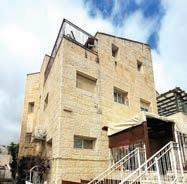









1:1). The main ingredient in teshuva is an undertaking not to repeat a transgression. The Korban is meant to influence the individual who offers it to improve upon himself in the future. It should not be viewed simply as a “penalty” for a past act, but rather as a collateral so that the sinful act will not recur.
Consider for a moment what the individual who offers a sacrifice had to experience. There were several stages that were necessary prior to the actual sacrifice. First, one had to travel to Jerusalem, likely meeting people on his way and having to explain that he is on his way to offer a korban. Then he may have had to inquire which type of sacrifice was required to be offered. Then he had to pay for the sacrifice. At each of these stages the individual would likely have verbally admitted his transgression, so the proper sacrifice was obtained. Then the process in which he engages as highlighted above (placing one’s hands on the animal, verbal admission and slaughtering of the animal), likely leads one to want to avoid having to undergo this procedure again.
The first sacrifice was offered by Kayin and Hevel. It was not brought after any sinful act. Why was Hevel’s sacrifice accepted and Kayin’s sacrifice rejected? The answer is not explicitly revealed in the Torah, although some have suggested that Kayin’s offering was not from the most worthy fruit. Perhaps the reason Kayin’s sacrifice was not accepted can be understood by what immediately follows. Kayin kills Hevel. If Kayin had the proper kavana (intention) when he offered his sacrifice – he would not have committed this heinous act. When offering a sacrifice one is to consider not just one’s

past, but rather to focus on how to improve one’s future. Kayin did not have that intent. God, who knows our inner thoughts, recognized Kayin’s lack of sincerity and accordingly rejected his “meaningless” sacrifice. From Kayin’s reaction (murder), it becomes obvious that Kayin did not contemplate improving upon himself when offering his sacrifice.
When we read Vaikra and learn about the korbanot and when we engage in prayer that is in place of the korbanot, we should contemplate the lesson offered by Rabbi Firer. More important than asking forgiveness for a prior error, we are to consider how to improve upon ourselves so that our mistakes do not repeat. Then we can be assured that God accepts our korbanot and tefillot and they will indeed bring us “closer” to Hashem.
March 28
March 19
March 15
March 24
Have you been meaning to get rid of that old hat lying in your closet?


Trade-in your old hat and get a discount on any new hat you purchase at SherlockS. We’ll clean your old hat and bring it to clothing centers where new immigrants and less fortunate people are looking for clothes.

Every word in Torah is instructive and replete with meaning. Often, we find a word that requires us to explore the reason for its specific use. One such example is in the passuk, “adam ki yakriv michem korban,” when a person brings an offering to G-d… (Vayikra 1:2). Rashi wonders why the term adam is used and not ish, the usual word used for a person. He understands it as a reference to Adam Harishon; just as Adam did not use anything stolen for a korban, so too we must not use anything stolen for a korban. Why does Rashi choose to explain it like this as opposed to conveying any other message?
To gain a sense of one’s mindset when bringing a korban, we must look at the korban that Adam offered. “It shall be more pleasing to Hashem than a yearling bull, with horns and hooves” (Tehillim 69:32). Chazal teach us that the first bull Adam offered as a sacrifice was created emerging from the earth. Hence, the horns came first then the rest of its body. Every bull created since then grows its horns last. Why do we need to know that animal Adam offered was created with its horns first? Rav Belsky in Einei Yisrael notes that every part of a bull can potentially be used to benefit man, its meat, its skins even its bones, except its horns. Why then, were horns created? Horns represent an animal’s strength and glory. When Adam offered this
first bull as a korban, he highlighted the concept that a sacrifice to Hashem expresses the offering of our pride and subjugating our ego completely to Hashem. One realizes that in sinning, man puts his personal desires before Hashem’s Will. In contrast bringing a korban makes amends by showing humility and submission.
On another level, Rav Belsky notes, Adam Harishon’s first sacrifice established the true purpose of creation for all of mankind. It symbolized Adam’s realization that man was created to use his physical drives, impulses and even his pride to serve Hashem. Therefore, when the Torah uses the word “Adam” in the instructions regarding karbonot, it reminds us to dedicate ourselves completely to the service of Hashem.
With this understanding we can now understand Rashi’s explanation not to offer a stolen animal. As Rav Roberts in Prism of Torah points out, thievery is the root of all sins. One who understands that whatever he has is for the purpose of serving Hashem with that exclusively, will never come to steal. Sacrificial offerings represent our complete dedication to Hashem with all our possessions, material and otherwise.
Rav Mordechai Druk adds that the first question a person will be asked after 120 years is, “Did you deal honestly in business?”
The bedrock for yirat shamayim is honesty, bein adam lachavero, bein adam laMakom and bein adam leatzmo.
Walking down King George St. in Jerusalem and want a cold bottle of water? Come help yourself to a bottle at 52 King George.
In loving memory of Yoni’s wife Tziporah a"h, a true Eishes Chayil, always full of chessed, kindness and laughter, and brought life and strength to so many people, that she touched! She was like Aron, who loved peace and pursued peace.


Yoni thanks Hashem for having the opportunity of having Tziporah in his life, to learn of her caring, patience and happiness, to overcome her challenges. May Tziporah's Neshama be a light onto the world, in a time of darkness, and may her Neshama shine to Gan Eden. Yoni misses Tziporah with tears in his eyes, as Hashem gave him a gift, a crown jewel, now he returns her to Hashem. With thanks and Toda. Love, Yoni
To help refill the supplysend tax deductible donations for Be’er Tziporah a"h Bottled Water Gemach
to Chabad of RechaviaRabbi Yisroel Goldberg email Rabbi@JerusalemChabad.org
02 800-1717
www.JerusalermChabad.org/DonateShekels
בוט יכ 'הל ודוה
Seeking P/T Social Media & Communications Coordinator for Jerusalem Synagogue
Responsibilities include: weekly bulletin/ monthly calendar/ periodic announcements/ managing whatsapp group/zoom shiurim; maintain video display & shul cloud account. Must be fluent in English & Hebrew and highly skilled in MS office. Send CV to info@bkms.org.il

Rav Yitzchok Breiter, Hy’d, was one of the great Breslover manhigim of Pre-War Europe. As one of the first Jews in Poland to make the difficult journey to Uman for Rosh Hashanah, he was a trailblazer. His journey opened the way for countless Jews to reach Uman as well, inspiring them to draw close to Hashem and to Rebbe Nachman’s path. He is the author of a number of significant essays and sefarim, including Seder haYom, a stepby-step guide to applying Rebbe Nachman’s teachings to our daily life. A respected elder in the Warsaw ghetto before being murdered in Treblinka, he composed Shir Yedidus, a beautiful piyut expressing hiskashrus, devoted connection to Rebbe Nachman.
Once, Rav Yitzchok and his neighbor were arrested on false charges by the Polish authorities, and led away in handcuffs and heavy iron chains on their legs, in a degrading fashion. A man of intense focus, faith and resilience, Rav Yitzchok maintained his composure and was not fazed. His neighbor, however, was a nervous wreck and crestfallen.
“My friend,” called Rav Yitzchok, quietly, “The Ribbono Shel Olam is with us! Why should you allow this to break you? Close your eyes, breathe deeply, and imagine your chains to be made of gold, a heavy,

precious gift Hashem is giving you to carry. Is that a reason to be sad?” When the verdict was delivered freeing his friend but sentencing him to five years in prison, Rav Yitzchok stood tall and recited the blessing expressing praise for Hashem in face of difficult news. Then he added the bracha of Ohev tzedaka u’mishpat from the Amidah, and proclaimed, “Now I will have the opportunity to serve God in a new way.” Rav Yitzchak was held in prison for just a couple days and released without explanation.
In 1917, when the political and security situation made the pilgrimage to Uman impossible, Rav Yitzchok organized and led a Rosh Hashanah kibbutz at the famed Yeshivas Chachmei Lublin. As a preparation, he authored Chalukei haNachal, a concise and powerful work divided into seven “pillars” or fundamentals of faith according to the path of Rebbe Nachman. This small sefer was designed to help guide the members of the kibbutz to step into deeper emunah. Preserved over the precarious generations, it continues to guide us, today.
The second section of Chalukei haNachal, called תוקלא תולגתה דומע, “The Pillar of Godly Revelation”, describes what we experience through the ‘Divine call’ in the opening of our sedra this week: השמ לא ארקיו, “And God called to Moshe.” Rav Yitzchok notes that Godliness is revealed to a person continuously, day and night. However, on rare occasions, one
experiences a full-fledged revelation: ותוא ןיארוק עמוש אוהו שממ, “One is actually called and he hears.” At such times, his eyes are illuminated and he yearns for closeness with Hashem.
Most often however, Hashem reveals Himself to us in a more concealed fashion, by means of spiritual struggle, thoughts and feelings of despair, heaviness, laziness or lack of motivation. There are even revelations in moments of heresy, confusion, lust and delusion.
,בישקמו ןיזאמ ,האורו עמושש המ יכ ,עדיל רקיעהו טרפב ,קוחרמו בורקמ ,השא דימו שיא דימ שיגרמ וא ,ותיב ינבמו ותשאמ
,הזב וילא ותוא ארוק רשא ׳תי ׳ה ירבד אוה לכה
הלעמלמ ול ןינתונש ןינוקתה אוה הזו
“The main thing is to know is that all we hear, see, intuit and feel in every interaction we have — with those who are close to us and those who are far from us, with family and with strangers, but in particular with our spouses and children — all of it, everything, is an invitation and calling from Hashem.
This is the tikun, the rectification that has been given to us from On High.”
As Rebbe Nachman expounds on the Alef Zeira, the small letter Alef in the word Vayikra as written in a Torah scroll, he tells us the following. Sometimes Hashem ‘calls’ us through a mode of הקד הממד לוק, a quiet, subtle ‘voice’, perhaps concealed within the workings of nature, embedded in everyday experience, hidden in plain sight. This is
because Hashem’s Presence fills the entire world and all experiences:
Now, one must also know that “God’s Glory fills the whole world” (Isaiah, 6:3), and there is no place empty of Him; He fills all worlds and surrounds all worlds (Zohar III, 225a)
And we can therefore call to Hashem — and Hashem calls to us — even in a place of darkness, as Rebbe Nachman continues (Likutei Moharan 33):
And this is what is brought in the Jerusalem Talmud (Taanis, 1:1): If anyone should ask you, “Where is your God?” answer him, “In the great city of Rome.” As it is said, “One calls to Me from Seir” (Isaiah, 21:11).
May we be blessed to know with complete certainty that wherever we are and whatever we are busy with, if we open our hearts and believe, we can hear Hashem calling us to draw close. And even if we are in the depths of exile or despair, if we listen carefully, perhaps we will hear the voice of the Ribbono Shel Olam encouraging us, “My friend, why should you allow this to break you?”
• Miriam Tovah Chaya bat Chanah Elisheva Rivka
Immediate delivery before the Chag
Get to shul easily on Shabbat? Load the scooter into the car’s trunk and drive to the children for Shabbat? Fly to a fun vacation abroad? With a SHABBATTO mobility scooter, anything is possible! It features an integral “mehudar” mechanism, and therefore doesn’t require tricky and costly installation, as in other scooters.




For more information and a free, no-obligation demo: movinglife.co.il/torah
077-2305650
As we finish the book of Exodus, and graduate to the new sefer of Vayikra, we invite all of Am Yisrael to take this opportunity to end the period of exodus and begin a new chapter of life with a new property in Jerusalem

Huge villa, divided into spacious living level + 5 additional units. 375 sqm. Double parking, garden, balcony, machsan.

NIS 6,900,000
Emuna Dadon 054-806-7106
Prestigious apartment in Mandate building



High ceilings, architecturally designed 112 sqm. 2 bedrooms (both ensuite), 3 balconies, 1st floor NIS 7,300,000



Alyssa Friedland 054-668-4111
Architecturally designed, beautiful penthouse apt, 5 rooms, 3 bathrooms, Succah, parking, storage. Perfect for a family- ready to move in. NIS 6,400,000 Orna Even 054-621-6069
Authentic Arab style house, unique and charming, first floor, 4 rooms, 113 sqm, 3.8m high ceilings. Near City Center and Meah Shearim. NIS 5,490,000
Israela Krakauer 052-577-4853

Ze’ev

4 room duplex-penthouse, 123 sqm, with a 40 sqm balcony. Storage. Private parking, A/C. Available for immediate entry. NIS 2,926,000

Emuna Dadon 054-806-7106
OPEN HOUSE
Horkania 12 Penthouse, Katamon/Rasco March 27th 11am
www.rem.ax/horkania12










Please join us. Refreshments will be served
Newly renovated, 4 bedrooms, 3 full baths,150 sqm, large balcony with amazing view, U/F heating, central a/c, elevator, parking. NIS 6,465,000 Ariyel Maresky 072-392-2109
New Tama 38 project across from the President’s house. 2 apts for sale: 1) 110 sqm; 2) 90 sqm garden apt Call for additional information
Orna Even 054-621-6069

Beautifully renovated, great location! 4 rooms, 91 sqm, master bedroom with ensuite bathroom, lots of natural light!
NIS 3,580,000 (flexible)
Micha Paul 052-511-6340
The largest collection of exclusive Jerusalem properties is just one search awayBY RABBI EZRA FRIEDMAN Director, The Gustave & Carol Jacobs Center for Kashrut Education

As wine from the shemitah year remains present on store shelves, the question arises whether it may be used for the four cups of wine at the pesach seder.
Although the shemitah year concluded on Rosh Hashanah 5783, fruits can still maintain Kedushat Shevi’it well into the eighth year. This is due to the fact that the status of holiness for fruit goes by the point at which it blossoms rather than the time it is picked. Therefore, fruit that blossomed in the seventh year maintains its shemitah holiness well into the eighth year. Such fruit must not be wasted, business must not be conducted with it and it may not be brought overseas.
Grapes which grew during the shemitah year and were harvested either right before or immediately following Rosh Hashanah maintain the status of shemitah fruit. The most common way of distributing shemitah wine is through a system called Otzar Beit Din.
The source of Otzar Beit Din (literaly “the Rabbinical court treasury”) appears in the Toseftah (Shevi’it 8:1-2), one of the earliest Talmudic sources. In the times of the Mishnah our sages made a decree that the Rabbinic courts in all cities would create a shevi’it storage system, known as Otzar Beit Din. Authorities (see Minchat Yerushalyaim p.213) instituted the system of basic payment for harvesting and delivery of Otzar Beit Din products. This is clear based on the wording of the Toseftah that the Rabbinical court would employ workers to harvest and produce the final product in the case of wine and oil.
The development and legitimacy of Otzar Beit Din has been disputed for centuries. Rav Mordechai Gross Shlit”a, (one of the OU Poskim) supports the Otzar Beit Din solution and allows the distribution of such produce. Otzar Beit Din products can be found at special distribution depots in predominately religious cities. Such produce may also be found in large super market chains and is sold over the internet by various suppliers. Otzar Beit Din produce should have proper certification. When purchasing at a supermarket, the label or box should have the words Otzar Beit Din (ןיד תיב רצוא) or kedushat shevi’it (תיעיבש תשודק). When receiving shemitah wine from someone other than Otzar Beit Din, one should consult with a rabbinical
The Talmud Yerushalmi (Pesachim 10:1) discusses the topic of using shemitah wine for the four cups of wine at the seder. The gemara implies that such use may be problematic. Later authorities discuss what possible issues there might be in using such wine for the mitzvah of the four cups. However, the Yerushalmi concludes that there is no issue using holy shemitah wine for the four cups. The Ridba”z (Hagahot Al Peat Hashulchan 5:18) and others (see Eretz Vehilchoteha 7:1) rule that it is even preferable to use holy shemitah wine for the four cups as it connects both mitzvahs.
The Torah commands that once a type of produce is not readily available in the field for animals, (meaning it has been completely harvested), an additional mitzvah must be performed with the produce, known as biur (see Torat Kohanim 25:7). Authorities dispute whether biur is performed by destroying the fruit or completely relinquishing ownership by putting it in a public domain for anyone to take. It is accepted by later authorities that relinquishing ownership is the accepted form of biur (see Shenot Eliyahu Shevi’it 9:2). In order to carry out the mitzvah of biur, one should remove the remaining fruit
from his house and place the fruit in front of three designated people. He must then recite, “Our brothers, Beit Yisrael, everyone who needs to take can come and take.” The fruit then becomes ownerless, and he himself or any of the others present may take possession of it. If one can’t take the fruit out of his house, he may bring three people into his house and make the food hefker in front of them. Even after biur has been performed, the produce remains holy and the laws regarding holy produce still apply.
It is clear from early sources that the time for biur of grapes is Erev Pesach (the day before Pesach). In a case where one has wine with kedushat shevi’it on erev pesach, halachic authorities dispute whether biur is required. According to Rav Mordechai Gross Shlit”a, if one only has a few bottles of shviit wine, biur is not required (see Torat Hasadei on Sde Mordechai, 108). According to other authorities, biur is required even for a minimal amount. In such a case, one should advise with a competent halachic authority. If one mistakenly forgot to perform the mitzvah of biur, there is certainly room to be lenient and consume the holy shemitah wine at the pesach seder (see Eretz Vehilchoteha ibid).
















Rabbi Goldscheider’s shiur has been sponsored for the 2023 Academic Year


ל’’ז המלש ןב בוט םשו ה’’ע םהרבא תב םירמ תמשנ וליעל
Rebbetzin Shira Smiles shiur is sponsored for the 2023 academic year by Dr. & Mrs. Menachem Marcus in memory of their parents, Rose & Dr. Emanuel Marcus z”l -
ל”ז סוקרמ השמ ןב יכדרמו ריאמ ףסוי תב לזייר Rosi and Ernest Strauss z”l -
ל”ז סוארטש דוד ןב לאינדו םהרבא תב דומיל
Rabbi Breitowitz’s Tuesday Shiur - Minchat Chinuch is sponsored for the academic year 2023 by Rabbi Refoel & Sharon Auman in memory of their parents Edith & Reiner Auman z”l
ד”יה לאפר תב ה”ע רתסאו ל”ז קודצ ןב הנוי and their son Rabbi Shmuel Eliyahu Auman z”l
י”נ לאפר ברה ןב ל”ז והילא לאומש ברה
Rabbi Goldin’s shiur is sponsored for the 2023 academic year by Dr. & Mrs. Menachem Marcus in memory of beloved aunts

Irma Haas a”h and Hilde Myer a”h
Rabbi Manning’s shiur has been sponsored for the 2023 academic year
ןמלק ןב גילזו ה’’ע תידנרב תב הנרב תמשנ יוליעל
Rabbi Taub’s weekly Thursday Parshat HaShavua Shiur is sponsored by The Jewish Legacy Foundation

As Chodesh Nisan is upon us, we begin to look ahead and prepare for Pesach. In addition to purging our homes of chametz, and the many provisions to procure to prepare for yom tov, we also begin to prepare and look ahead to the majestic night of freedom, the Seder Layl Pesach.
Among the many incredible messages inherent in the Seder Layl Pesach experience is the fundamental idea of sacred speech. Speech plays a central role in the entire evening. Our Sages teach us that we must verbally express and recall the many details and nuances of the redemption from Egypt. Our youngest children traditionally verbalize four questions to begin this dialogue. We then reply to those four questions by stating:
“We were Slaves to Pharaoh in Egypt…and there is a mitzva incumbent upon each of us to discuss and tell of the redemption from Egypt.” “Vchol Hamarbeh lesaper b’yetziat mitzrayim — harei zeh meshubach….” — “All who say much in their description of the redemption from Egypt are to be praised….”
In the Haggadah text of the Rambam, we note a slightly different version of this last statement: “Vchol Hamaarich — lesaper b’yetziat mitzrayim, harei zeh meshubach….” — “All who speak extensively in their description of the redemption from Egypt are to be praised….”
How are we to interpret the subtle difference between our more familiar version
BY RABBI SAM SHOR Program Director, OU Israel Center
and that of Maimonides? What lesson might we glean from clarifying the difference between the words hamarbeh (much) and hamaarich (extensive)? Why ultimately do most of us not utilize the Rambam’s version of this important text?
Perhaps one answer to these questions actually is hinted at later on in the Seder’s discussions of the ten plagues. After listing those ten plagues, we are then introduced to several rabbinic interpretations of those plagues, but the first comments included are those of Rebbi Yehuda.
Unlike the other Sages mentioned, Rebbi Yehuda doesn’t choose to elaborate extensively about each of the plagues; rather, he teaches us an acronym to recall the plagues in a short, concise, memorable way. Rebbi Yehuda seems to be telling us that the most memorable ideas are clear and succinct instead of the most verbose or extensive. What Rabbi Yehuda is teaching us is that we need to become more accustomed to realizing the power of our words. When we are able to share important information in a most direct and clear manner, it is more likely to be understood and received favorably. When we are not aware of this important concept, our intended messages might get lost or misconstrued.
This very idea of the power of speech is actually an important lesson that is also alluded to in the Exodus story itself. The Chasidic Master Rebbe Moshe
Yechiel HaLeviEpstein of Ozarov, zy’a makes an interesting observation in his commentary on the Haggadah. The Rebbe points out that the prime villain in the Exodus story is not simply called Melech Mitzrayim, the King of Egypt, but also Paroh. The Rebbe taught that the word Paroh is made up of the same Hebrew letters (pay, reish, ayin, and hay) as the words peh ra, a wicked mouth! The Rebbe wrote that inherent in the Jewish People going forth and becoming freed from Egyptian oppression is the need to work to leave behind that power represented by Paroh; that is, to leave behind the use of words for wicked purposes and begin to use our words to speak appropriately and for sacred purposes.
On the Seder night, we recall the Exodus from Egypt, and we are mandated to speak with clarity of all the miraculous events that transpired as we went free from Egypt. Each year, as we tell this sacred tale and come together to experience leaving behind Egyptian oppression, may we also merit to emulate this beautiful message introduced by the Rebbe of Ostrov. May the words of Torah we share on the Seder night inspire us to realize the sacred gift that is speech and the potential redemptive power inherent in channeling our words to inspire, bring clarity, and build unity among us.
Great Investment! 2 rooms, mirpeset, underground parking, new building under construction in a great location. Starting at 1.89m shekel. 3 & 4 rooms also available
For Rent in a brand new building in the City Center - 4 rooms. 102m, Amazing views to the Temple Mmount. Shabbat elevator, parking and 9m mirpeset. 12,000NIS
For Rent in the German Colony on Emek Refaeim street, 2 rooms, one floor up, good shape, parking. 5,100 a month


IN A NEW BUILDING ON AGRIPAS ST CLOSE TO KING GEORGE THREE 2-ROOM APARTMENTS BEAUTIFUL, NEW, BRIGHT UNDERFLOOR HEATING, A/C, 2 ELEVATORS NIS 5500/MONTH
On HaPalmachgreat 4 room apartment, 92m plus large garden in use, exclusive.
Asking 4.95 million NIS
Smadar 050-3114040 // 02-642-4329
smadi_bida@walla.co.il
www.integrityrealestate.co.il



















The moment had finally arrived. After we were subjected to two centuries of nightmarish torture and bondage, Hashem was about to liberate us, thereby fulfilling His ancient promise to our ancestors. The recalcitrant Egyptians had been pummeled by a year-long cycle of brutal plagues, as Pharo, their once proud leader, was brought to his knees. Independence was in the air.
Before announcing the instructions for the great night of Exodus, Hashem delivered a new calendar, fixing the month of Nissan as its new year. In addition to a different start point, our new calendar would be structured around twelve months, and not around a 365-day solar cycle.
with time authorship and with the ability to set our own schedules. By introducing a new calendar, Hashem empowered us with time agency.
The night before we left Egypt, we marked our passage into freedom by conducting a Pesach meal which had to be concluded by midnight. Freed from bondage, we could now control our schedule and were to complete the festivities by an appointed hour. That night of freedom we managed time in a precise and meticulous manner, characteristic of free men. We were expected to demonstrate time agency and our new calendar highlighted this newfound status as freemen in control of time.
For some reason, our geulah from Egypt was inaugurated by the launch of a new calendar and a new method of marking time.
Slaves live with little control over their freedom, their decisions, and their schedules. Constantly subjected to the whim of their masters, day and night become indistinguishable. Without any consistent schedule, human identity slowly erodes. Granting us freedom, Hashem endowed us
Actually, our introduction to time management commenced a few days before we received news about our new calendar. A few days earlier our former Egyptian masters were plunged into a vacuum of timelessness. For a week, they were shrouded in darkness, reaching a point that they could no longer see one another, or even rise from their seated position. They spent an entire week in darkened solitary confinement, ultimately, losing any sense of the passage of time. They were now suffering the exact same torment they had subjected us to.
Meanwhile, in Goshen, our grandparents, who by this point were no longer physically enslaved, enjoyed a normal lit world and a normal time routine. Transitioning into
freedom, we watched the Egyptians lose their schedule, just as we gained our own time management. Shortly thereafter, as Nissan arrived we received a new calendar, and finally, on the night of the exodus, we were expected to behave with scrupulous time discipline.
Time transitions are milestones of human experience. As we transition into a new year or a new month, we take stock of our lives, and ponder our future. Every Shabbat mevarchim, as we “bless” the new month, we stand atop a precipice looking out at the unknown, while our hearts flutter with both anticipation and trepidation, praying that Hashem will steward us through the uncertain future. Time transitions are momentous occasions…but not for slaves who live without hope and without horizons. People without freedom are trapped in an endless and monotonous world, enduring unending cycles of suffering and anguish. For free men, time transitions are milestones, but for slaves they are merely painful taunts. By delivering a calendar pivoted on monthly transitions, Hashem awarded us with lives of hope, opportunity, and renewal.
Our new calendar conditioned us to our new lives as free people, who could manage time and would live with hope and future.
More important than merely conditioning us to a new life of freedom, the new calendar launched an entirely new chapter in human history, and radically altered time experience. We typically view time as the background for human experience. Time inexorably cycles forward, determining

seasons and framing day and night. Time provides a framework which steadies our experience and provides predictability and rhythm. Human experience requires this stable and predictable platform. In the modern era we have discovered how vital time rhythm is to our welfare. Flying into a different time zone, we upset the bio-rhythm which time provides, become discombobulated, and suffer jet lag. Time provides a solid and durable scaffolding within which we orient our lives.
Promising that human history would never be upended by a global apocalypse, Hashem guaranteed Noach that time and seasons would remain undisturbed:
of time arose, introducing an entirely different time experience. Time became a process with a specific beginning and a specific endpoint. Time was no longer merely a static and immovable background for human experience, but a fluid course influenced by human behavior. We call this new time-process redemption. Redemption is a historical process through which the world gradually advances back to its original pristine state, just the way Hashem created it. Time has a distinct trajectory, arching toward a better state, and this trajectory is driven by “time agents”. A new calendar represented an entirely new system of time experience, and tasked us with the responsibility to redeem history and to redeem time.
A world with dependable and predictable agricultural periods, recurring seasons, and cycles of day and night enables human prosperity. We desperately require that time be static and predictable.
Furthermore, natural time as a background affects humans in the exact same manner that it influences Nature at large. Humans experience time no differently than plants and animals, except that we are conscious of its relentless passage.
With the birth of our nation, a new form
We are agents of time and agents of geulah. We don’t just occupy a world framed by static time, but shape the arch of redemptive time. Our singular time experience is anchored to an entirely different calendar.
Within this new calendar of time, not every moment is identical. Within natural time every minute is interchangeable with the next. Natural time must be unchangeable and identical, to provide consistency and continuity. Human experience differs from moment to moment, but the background of time remains constant and monotonous.
To all of our devoted friends and donors who contributed MAOS CHITIM and helped over 200 poor and needy families enjoy the Holiday of Pesach - Best wishes for a Chag Kasher V’sameach, and a healthy spring and summer.
Send your contributions to the Clara Hammer Chicken Fund P.O.B.18602 Jerusalem 91185

(02)5810256
Donate via PayPal at Chickenladyofjerusalem.com
חמש
Within our calendar of redemptive time, specific days are imbued with distinct redemptive meaning. In particular, the night of Pesach is a unique moment of redemptive resonance, during which we reenact the exact same circumstances and rituals of that seminal night of liberty. The 15th night of Nissan launched redemptive history and every successive Pesach night further advances redemption. On Pesach we look back over time, span the centuries, and sculpt the arch of redemptive time.
We even manipulate the calendar to synchronize Pesach with the spring season, locking in the precise weather conditions of our original exodus. Namely, we completely ignore natural time to preserve the authenticity of redemptive time. We choreograph natural time to assure the integrity of redemptive time.


As agents of time, we aren’t locked into a static reality, but shape our world and our experience. Ultimate freedom is only achieved when we escape our own historical period and live as part of a larger multigenerational process of redemption. We may physically occupy the 21st century, but we participate in a centuries-long process of redemption which far outlasts the limited time we spend on this earth.
Months are the building blocks of our Jewish calendar and are referred to in Hebrew as chodesh or שדוח, the very same etymological root for the term chadash or שדח , which signals renewal. We aren’t locked in or trapped in time but are free to manage it. We are free to live beyond our own small historical space. We are free if we live redemption.

We buy gold, silver, coins, Judaica, old sifrei kodesh, banknotes, medals, collectables, antiques, sports memorabilia and more.


Ran: 054-5561223


One person’s trash is another person’s treasure…








RESERVATIONS MUST BE MADE IN ADVANCE Shield of Jerusalem Tours pre and post Pesach only

Sunday, April 2nd
Tuesday, April 4th
Sunday, April 16th
Old City Tours
Sunday, April 9th
Thursday, April 13th
Tours are filling up fast! RESERVE NOW!
Ateret Cohanim tours around Yom HaAtzmaut Tours to start either 10am or 2pm
Sunday, April 23rd
Thursday, April 27th
Sunday, April 30th
ISRAVILLA IS AVAILABLE FOR PESACH. ACCOMMODATES 50+, HEATED POOL, TOTALLY SECLUDED QUIET EXPANSIVE ESTATE. ISRAVILLA.COM

(for guest feedback, see Google Maps Isravilla)
This week: KIMCHA DEPISKA!
• Checks: Make out to “Yesh Ezra” Send to: Yesh Ezra, POB 36156, Romema, Jerusalem, 9136101

• Bank Transfer: Bank Mercantile (17), Branch 642, A/C 79747843, Yesh Ezra To obtain your tax benefit receipt, send details by Whatsapp/email.
• Credit card: Sara at 077-820-0196 (Sun-Thu. 10:00am-3:00pm)
• Website: www.yeshezra.org Click on “Donate Now”
Tour reservations must me made in advance and confirmed by text or email register online at ateretcohanim.org/tours
In Israel call Daniel 054-654-4407 dljerusalem@gmail.com
In US call Shani 917-297-2075 shaniateret@gmail.com
scan here to reserve your tour

Inquiries: Menachem Persoff 050-570-1067
menpmp@gmail.com
“Help Me remember! Let us join in argument, Tell your version, That you may be vindicated” (Yeshayahu 43:26)
How do you fight a good fight? A look at this week’s Haftorah gives us insight into the uncomfortable dynamic of arguments but at the same time gives us hope for movement forward. Yeshayahu describes the deep rift between Hashem and His people - their unfaithfulness, lack of authentic devotion and service as demonstrated by their sacrifices without intention and abandonment of spiritual practice. And yet, Hashem expresses a willingness to converse.
Let’s take a closer look at posuk 43:26 for a better understanding of what it means to create an opportunity for dialogue
even when sparring with a loved one, in this case Hashem with His people. First, Hashem asks to hear the Jewish people’s side of the story. “יִנֵריִּכְזַה , Remind me,” says Hashem even when He certainly doesn’t need to be reminded. Hashem engages His people, expressing interest in investing in the relationship, in hearing the other side. Metzudot David suggests that it is like two people who are fighting and one says to the other - remind me what you have against me. I need to hear you say it so I know why you are hurting and how I’ve hurt you..
Hashem then says,
, let us judge together. Even when arguing, the reconciliation is done together. Hashem expresses an openness to revisit and reevaluate. There are two sides in a relationship and Hashem is acknowledging the Jewish people as a partner. Next, Hashem gives the opportunity for the Jewish people to tell their side of the story, הָּתַא

, you tell. Maybe you can explain, says Hashem, what went wrong, why you abandoned Me. I’m ready to hear

your excuses and explanations - I’m ready to listen. Finally, Hashem says, קָּֽדְצִּת



, so you will be justified. Says the Malbim, I want you to be vindicated because I don’t want to or need to be right. I want your excuses to be true because I believe in you and your commitment to our relationship. Even if I could undo your argument, Hashem says, I would rather hold on to even the weakest excuse so that you could be right.
In hearing the grievances that Hashem lists, His abandonment might even, Heaven forbid, seem justified. It’s His willingness to connect with us despite our sins that should inspire us to draw closer to Him. Beyond that, it should motivate us to connect with those who we may feel have slighted us. Hashem is giving us a model for our relationships, a guide on how to rebuild and repair when investment seems pointless and the connections broken. It is with this hope and inspiration that we will, please G-d, rebuild our people and merit a rebuilt Beit HaMikdash and the everlasting relationship with Hashem.
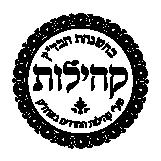

Amazing
5 minutes from Emek Refaim, 40 min walk from the Old City, 6 bedrooms - sleeps 15+, 5 bathrooms, 3 floors, 200m, large kitchen, large yard (with basketball hoop), Strictly Kosher
Available March 30 - April 17 For more details: 052-238-0638


Robert@kleimanrealestate.com




The underpinning of the exile and the diffidence that exists in the world, is a result of insufficiently recognizing [the value of] the Land of Israel, her worth and her wisdom, and we fail to remedy the sin of the spies who spoke negatively about the Land with a “teshuvat hamishkal” (repentance commensurate with the sin): to declare and and share the message to the entire world of its beauty and grandeur, its holiness and nobility. Even when we engage in extolling the Land - if only we would merit to depict one-thousandth of the splendor of the cherished Land, and of the glory of it’s Torah, and the elevation of its wisdom, and the ruach hakodesh (holy spirit) that flutters within it. (Eretz Chefetz 4:1)
Teshuvat Hamishkal is a practice prescribing a more aggressive form of repentance to make amends for a particular sin. This form of teshuva is meant to offset the transgression in cases where the causal methods of repentance seem unable to fully remedy the damage done.
Rav Kook recommends this form of teshuva in our ongoing efforts to make good the sin of the spies sent by Moshe. The spies slandered the Land of Israel, demoralizing the people
and causing forty years of wandering. Our task is to remedy the sin by accentuating the Land’s superiority. We must relay a message to the masses who have been discourageddeclaring the Land’s “magnificence and beauty, its holiness and grandeur.”
The Talmud (Taanit 29a) states that the events of the spies' return from Canaan and their delivering the evil report occurred on the ninth of Av: “The day of the spies’ return was the day prior to the ninth of Av. The Holy One, blessed be He, said to them: “You wept a weeping without cause, therefore I shall establish for you weeping for generations on this day.”
The above statement should be understood not as a punishment but merely as a consequence of the nation's lackluster attempt to enter their homeland. Their lack of desire trickles down through the generations; our longing for the Land has not yet achieved the appropriate passion and excitement that it deserves.
Rav Kook also references the sin of the spies in a well known letter he writes to his Jewish brethren across the world inviting them to come back home. Although Rav Kook was legendary for his warmth and compassion to everyone, here he speaks
sharply concerning those who denigrate the eternal bond the Jew has with the Holy Land. “We must fight with all of our might against the hatred toward the Holy Land which has begun to infect certain individuals among us. We must destroy with spiritual might and the eternal sanctity of the pleasant Land, the poison of the traitorous spies who, precisely at this time of grace, have begun to emerge. This espionage is a struggle with its last ounce of strength, but we can say with certainty, with the pride of the name of God, Who chose the pleasant Land, that it resembles the final struggle of a flame which climbs briefly before burning out. The overwhelming love for the Holy Land, for Zion and Jerusalem, will run its course, and like the sun at high noon, it will enlighten all the dwellings of Jacab” (Translation, ‘Celebration of the Soul,’ p. 190).











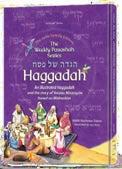











31 Kanfei Nesharim St., Givat Shaul, Jerusalem

Here you will find all the leading American brands
KEDEM GEFEN GLICK PASKESZ LIEBER'S


The largest selection of Passover products with the best and most mehudar kashrus


This year a particularly large selection of new, kitnoyos-free Pesach products












A large selection of hand/machine matzah (including spelt), a wide variety of meats and pastrami. Different sauces, sweets, snacks and more...
Opening Hours: Sun.-Thurs. 8:00- 22:30 |
Friday 8:00- 14:30
Motzei Shabbos parashas Vayikra: 3 Nisan, 25.3
Motzei Shabbos parashas Tzav: 10 Nisan, 1.4
OPEN FROM AN HOUR AFTER SHABBOS IS OUT UNTIL MIDNIGHT store closed during Pesach
The Jewish year in relation to the festivals starts with Nissan and Pesach, and ends with Adar and Purim. Pesach is the epitome of a miraculous deliverance, and stands in stark contrast to Purim that lacks any obvious and blatant miracle. While we celebrate a salvation on Purim, it was brought about by the political manipulations and behind the scenes strategy performed by Mordechai.
It could be suggested that the year opens at the highest point, the most revealed and incredible miracles, but as the year continues, it descends into a disconnect from Divine revelation. The year ends with a festival, Purim, that is completely devoid of any miraculous intervention.

Yet this presents a halachic problem; if there were no miracles on Purim, why do we make the blessing "sheasa Nissim", that He made miracles? Purim teaches us that we need to find God and His hand in the everyday, in the place that seems to be miracleless, in the void left when direct intervention is no longer necessary.
Like a child, initially God spoon fed us and held our hand as we left Egypt. During our history and our "festival year", we mature, to the point that we do not need God to be so obvious in order for us to see Him.
Noam and Ilana had undergone many treatments under PUAH supervision and guidance, and they had been blessed with two children from treatment. They wanted to have more children and so continued doing treatment, without success.
After several attempts they both decided that they had been through enough and would be happy with their family of two children. With mixed emotions they gave away their baby clothes, happy to be helping another couple, but sad that they were giving up on their own dream.
When Ilana started to feel unwell, she went to her doctor, who sent her for a few tests. The results that came back were completely unexpected; she was pregnant naturally. Their initial shock soon gave way to great joy and gratitude.
Their son was born a few weeks ago and they called him Matan, to stress that he was a gift from God. I told Noam that every child should be called Matan, since every single child is a huge gift. Sometimes we are so used to such gifts that we take it for granted. Sometimes God reminds us how miraculous each and every child is.
The Puah Institute is based in Jerusalem and helps couples from all over the world who are experiencing fertility problems. Offices in Jerusalem, New York, Los Angeles & Paris. Contact (Isr) 02-651-5050 (US) 718-336-0603 www.puahonline.org









At 4:30 p.m. Rabbi Yosef Tzvi Rimon
Rav Yosef Zvi Rimon is the Chief Rabbi of Gush Etzion, Rosh Yeshiva of Lev Academic Center, founder and chairman of Sulamot and La’Ofek and Rabbi of Alon Shvut South.
At 5:15 p.m. Rabbi Berel Wein
Rabbi Berel Wein is the Senior Rabbi at Beit Knesset Hanassi. He has popularized the subject of Jewish history through more than 1,000 audio tapes, newspaper articles and international lectures .
At 6:00 p.m. Rabbi Joel Kenigsberg


Rabbi Joel Kenigsberg is the Rabbi at Beit Knesset Hanassi. A graduate of the Manhigut Toranit program at Eretz Hemdah, he was a shaliach of Mizrachi UK in London and co -authors the Tzurba m'Rabanan series in English.



Can shemitah wine be used for the four cups?
The Yerushalmi questions the possibility of fulfilling the obligation of drinking four cups of wine with shemitah wine. The Talmudic commentators deliberate what the problem could be. They offer several possibilities, such as תוליבח תוליבח תווצמ תושעל – fulfilling two mitzvot (consuming shemitah produce and drinking the four cups) in one act. Ultimately, since the Yerushalmi’s conclusion is that this is permissible, supporting shemitah-observant farmers is certainly relevant and even a mitzvah (according to some opinions). Moreover, one of the characteristics of our freedom on Pesach is our independence and ability to grow the produce that we need. What expresses this more than our seder table featuring the wine of liberty grown by our own farmers in the Holy Land?!
The second cup
Rabbi Kook maintains that shemitah wine should not be used for the second cup in light of the custom to spill out 16 drops
onto the plate (10 plagues; תורמתו שאו םד ב”חאב ש”דע ,ך”צד).;ןשע This constitutes hefsed, wasting shemitah produce.
Rabbi Kanievsky holds that the wine should be drunk after spilled out. While in principle we do not drink this wine since it symbolizes the plagues, when there is a halachic requirement to drink the wine, the halachic requirement trumps the kabbalistic custom.
Rav Elyashiv did not spill out the drops of shemitah wine, rather he drank the entire cup; perhaps since spilling out the wine is only a custom while wasting shemitah wine is a halachic prohibition.
Rabbi Abba Shaul permits extinguishing the havdalah candle in shemitah wine since this is the regular use all year. It seems he
Please
Shabbat March 31-April 1 (Shabbat Tzav-Hagadol/Pesach/ Sh’mini)
deadline for ads: Thursday, March 23
Shabbat April 21-22 (Tazria-Metzora)
deadline for ads: Sunday, April 16
Shabbat April 28-29 (Acharei-K’doshim),
deadline for ads: Thursday, April 20
please email or call Ita Rochel ttads@ouisrael.org/ 02-5609125
would also allow spilling out a few drops for the second cup. Most posekim, however, are not lenient.
We need not worry that wine might be spilled over the course of the seder. The hefsed prohibition applies only if produce is deliberately wasted, not if done accidentally.


It is meritorious to drink shemitah wine or grape juice, which expresses both physical and spiritual liberty.
For the second cup we have several options: (1) drink the spilled wine (2) don’t spill wine; (3) use non-shemitah wine for this cup only.
Spills: While we should do our best to ensure that wine isn’t spilled during the Seder, if spilled we need not gather it from the table or floor.



We are hiring regional reps in the following cities:
Beer Sheva
Beit Shemesh
Carmiel - Golan
Chashmonaim
Gush Etzion / Efrat
Haifa
Jerusalem
Modi'in
Ramat Beit Shemesh
Ra'anana
Rechovot
Tel Aviv
FLEXIBLE HOURS - PART TIME POSITION
JOB RESPONSIBILITIES INCLUDE:
• Regular outreach calls to new Olim
• Maintaining region's "NBN Israel Calendar"
• Communcation with municipal resources
JOB REQUIREMENTS
• Anglo Oleh with over three years in Israel
• Must be living in the region they are representing.
For more information and to apply: hr@nbn.org.il


A couple of weeks ago, as Taanit Esther came to a close, I remember feeling completely weak and non-functional. Every task seemed so difficult. But the moment the fast ended and I had a cup of water, I immediately felt refreshed and ready to face the world. My immediate thoughts were“I can’t believe how human we are, it’s so mind-blowing how dependent we are on our material needs”.
It is this feeling that we capture a few times a day as we recite Borei Nefashot after eating foods whose brachot are Shehakol, HaAdama, or HaEtz. We start off the bracha with the words - תושפנ ארוב.....'ה התא ךורב ןנורסחו תובר – Blessed is Hashem who creates many Neshamot and their deficiencies. At first glance, this seems like a very strange way to praise Hashem. The fact that Hashem has created so many billions and billions of individuals is certainly praiseworthy, but why focus on the fact that they have inadequacies?
The Chatam Sofer (Torat Moshe Ekev) explains that in fact Hashem purposely pre-programmed us to have deficiencies. He created human beings in such a way that without water, they simply cannot survive. The reason for this is to remind us of our dependence on Hashem. Without Hashem constantly supplying us with our basic
necessities, we would cease to exist. He writes that וארוב תא ריכיו ןורסחב ארבנ ךכלש םדאה תבוט רקיע בוט לכמ ול הבוט רתוי
the best thing that man was given is the fact that he was created with deficiencies so that He comes to recognize his Creator and will serve Him… so we see that His lackings are better for Him than all other goods. We thank Hashem for sustaining us with these essentials and we also thank Him for enabling us to recognize how much we need Him.
We continue on in the bracha with the words –

for all that You created to bring life to the souls
077-2050015
052-2678749
golanechasim@gmail.com
Meir Golan
Meir Golan

Old Katamon: 4-room apartment in a small and quiet street, 101 sqm, renovated, very bright and airy, master bedroom, Safe room (mamad), sukkah balcony, view, elevator, 3,400,000 NIS
Old Katamon: 4-room apartment, 90 sqm, well split, bright, airy, sukkah balcony facing a magnificent panoramic view, 3 exp Shabbat elevator, parking, 3,290,000 NIS
Rasco: new 4 room apartment, 95m, master suite, elevator, balcony, very nice view 3,100,000 NIS
Arnona: 4-room apartment, 90m, beautifully renovated, master suite, balcony, storage, Shabbat elevator, private parking 3,250,000 NIS
Old Katamon: Spacious 3-room apartment in a very quiet street, 75 sqm, sukkah balcony facing a green and pastoral view, 3 exp. Shabbat elevator, private parking, storeroom, 2,690,000 NIS
Baka: New 4 room apartment in a new building, 88m, master suite, storage, Shabbat elevator, private parking, 3,950,000 NIS

Rechavia: 4-room apartment, 92m, Suka balcony, Shabbat elevator, fully accessible, private parking, storage 4,400,000 NIS
Baka: 5-room garden apartment, 140m, master suite private parking, storage, full of light and airy, nice garden, 5,250,000 NIS
Old Katamon: Spacious new 5-room penthouse, 155m, terrace, great panoramic view, underfloor heating, full of light, Shabbat elevator, 2 parking, 8,900,000 NIS
Katamonim: new project, 2-3 room apartments, starting from 1,750,000 NIS
4-5 room apartments starting from 3,200,000 NIS
All apartments are fully accessible with parking and storage.
of all who live. The Tur (OC 207) explains that this is referring to all the extras that Hashem provides for us. He says that in the first half of the bracha, we thanked Hashem for our basic needs – water, etc. Now, we go on to thank Hashem for the “luxuries” - לע םירסח תושפנה ויה אלש םלועב ארבש םירבדה ראש לכ לכ שפנ תויחהל ןהב גנעתהל אלא ןניאש ןארב אל םא םהמ יח- for all the things that we don’t specifically need to survive, who purpose is to just give us enjoyment. Hashem could have just given us bland food which contained the nutrients that we need to live. But instead, He created fruits and vegetables with a huge array of colors, scents, textures, and flavors, in order to יח לכ שפנ םהב תויחל, to invigorate and uplift us, and show His special love for us. This idea can be understood in a broader sense as well, beyond the foods that we eat. Hashem provides us with our basic
descendants dwell from Egypt
necessities in general. He takes care of all of our physical needs, ensuring that our bodies function properly, providing us with sustenance, health, and shelter. But His support doesn’t end there. He goes a step beyond and provides us with spiritual sustenance as well, giving us extra levels of “luxuries” to invigorate and uplift us. He provides us the Torah and Mitzvot, Tefilla and inspirational experiences, and the ability to connect and create a deep relationship with Him.

the


When Avraham addresses the people of Cheit, trying to “Ger V’Toshav Anochi Eimachem” (23:4) “A Stranger and This seems to be a contradiction. If one is a stranger than is no longer a stranger. What did Avraham mean? The Magid of Dubno (Jacob ben Wolf Kranz 1741-1804) this tense situation in order to, both, state his truth and be said, on the one hand, “I am a Resident’ due to G-d’s promise need your agreement to purchase a plot. In other words, Avraham “strangers”, while they understood him as saying that “they” The peace was kept, and Avraham remained true to his Shabbat Shalom
םימלועה יח ךורב – Blessed in Hashem who gives life in both the material and spiritual worlds, providing for us all that we need in both spheres.

We were walking into the unknown, unaware of the destruction that awaited us out there amongst the rubble. Without knowing our fate, we banded together with the vision of saving lives clear in our minds.
Our journey into the unknown lay ahead. With 25 orange-clad volunteers, 10 tons of supplies, and an army of hundreds supporting us as we departed Israel. The mission was clear…we were going to save as many lives as we could.
Without any full understanding of when we'll depart and even where we’ll land, we prepped our supplies. The flight was a blur; the only thing we could all think about was the mission at hand. As we arrived at the disaster zone, our senses were lit up with the harsh smells and the sights of a ruined city. We met people who were in shock, people who were searching for a glimmer of hope amongst the dusty ruins of their city.
We stormed into the disaster zone with our sleeves rolled up. All around us the air was thick with grief, but there were still citizens determined to do their part. We saw locals holding each other. We gave them a smile and as they looked back on a wave of orange, we saw a spark return to their eyes. That is when the Psychotrauma and Crisis Response Unit began to engage with the affected population to provide psychological first aid. We worked tirelessly through the night to rescue people from the destruction. We treated the crowds of strangers who came to us, the orange volunteers, to seek medical assistance and comfort. This was the first time many of the locals had ever met Israelis before. It must have been a shock for the locals, since these Israelis they met were the people who pulled their neighbors out of crumpled buildings alive and helped comfort them in their endless grief. When we left Turkey, we were proud because we knew that we left dozens of people alive, treated, and comforted. We thought of the lives we saved and the lives we fought to save as we left. But, it was time for us to step back and go home to our families. So, thank you to the true heroes. Thank you to their family members who allowed them to travel to Turkey.
Thank you to those who worked for hours to organize and arrange the team’s transport. Thank you to the heroes that dug, extracted, and treated the many injured victims. You are all what makes Israel strong. You are the beautiful side of this nation. You prove the values of our organization to the public by working hard to better the world.

Congratulations to the brave United Hatzalah volunteers who are always ready to save lives. Yossi Cohen is an EMT with United Hatzalah in Kfar Saba, a Major (res.) in the IDF Home Front Command and served as the commander of United Hatzalah's rescue mission to Turkey.



Noa Rogelberg
Hometown: Great Neck, New York
JLIC: Bar Ilan/ Givat Shmuel



In this week’s Parsha, Parshat Vayikra, Hashem gives Moshe the commandments concerning many different kinds of burnt offerings. When Hashem calls to Moshe, the word “ארקיו”, “to call” is used, the first word in this Parsha. If Hashem had to “call” Moshe, this implies that he was doing something beforehand. What was Hashem “calling” Moshe from? Was there a break in between what Hashem related to Moshe in last week’s parsha and this week’s? Rashi tells us something fascinating- he says that yes, in fact, there was a break. But what was it for? Surely Moshe was busy doing something productive.
As Rashi writes: “השרפ ןיב ןננובתהל השמל ןתל ןינעל ןינע ןיבו השרפל” - To give Moshe a set time
for contemplation between one topic and another. Hashem had to “call” Moshe from contemplating and understanding exactly what Hashem was telling him. Moshe was a Torah giant who heard G-d’s voice directly, and he had to take the time to make sure that he completely internalized and understood Hashem’s message. We learn from this something crucial about Torah learning. If Moshe heard the voice of G-d directly, and had to take time to understand what He was saying, then all the more so, we, normal human beings have to make sure that we take time to contemplate and understand Torah. As important as it is to learn the content of the Torah, it is equally as important to take the necessary time to understand and internalize its concepts. To learn is simply not enough.
Often, learning Torah seems dauntingthere is simply too much to learn and not enough time. But from this concept, we learn that contemplating and internalizing Torah is an equally important feat, and it is a part of the process that should not be overlooked. When Hashem gave us the Torah, he consequently gave us a piece of himself. When you learn and

The OU’s Jewish Learning Initiative on Campus (JLIC) is creating and nurturing vibrant religious communities in Israel to support English-speaking college students and young professionals. JLIC Israel’s goals include: building a warm and welcoming Jewish community for students and young professionals; providing engaging and dynamic Jewish education; providing a supportive home environment for Olim; providing resources for personal and religious growth, including personal mentoring, Aliyah support, religious guidance and leadership development. Current JLIC programs in Israel include: Reichman University - Herzliya; Bar Ilan University - Givat Shmuel; Tel Aviv University; Tel Aviv for Young Professionals; and Jerusalem.
Contact:









OU-JLIC














 Rabbi Jonathan Shulman, Director of
Rabbi Jonathan Shulman, Director of


 in Israel shulmanj@ou.org
in Israel shulmanj@ou.org




internalize the content of your study, Hashem becomes a bigger part of you. Through learning and understanding our learning, we will be able to achieve ultimate closeness to Hashem.

 Ian Schwartz
Ian Schwartz
Sefer Vayikra introduces the idea of Korbanot as a formal service in the Mishkan. The Torah strangely uses the word םדא instead of שיא. Why use such an abnormal language? The Kli Yakar explains that this is alluding to a very deep idea.
The first time we encounter Korbanot in Tanach is in the story of Kayin and Hevel. Each of these brothers brought a korban which was lacking in its quality. Kayin decided to bring a korban from his own initiative, however he brought from the worst of his crop.
Hevel brought from the best of his sheep, however he only brought a korban to mimic his older brother’s behavior.
The Kli Yakar says that םדא is a reference to Adam Harishon. When bringing korbanot or just in general, our avodat Hashem needs to be like that of Adam. Just as Adam was alone in Gan Eden with no influences from anyone else, so to our avodat Hashem should be completely genuine and authentic. We shouldn’t fall into the trap of copying or comparing ourselves to others, Hashem wants us to be ourselves, no one else.
The Kotzer Rebbe summed this up in the following teaching: “If I am I because I am I, and you are you because you are you, then I am I and you are you. But if I am I because
you are you and you are you because I am I, then I am not I and you are not you!” Shabbat Shalom!


Not only does the Parsha go into every little detail about the process of sacrificing to Hashem, but it also adds details about the requirements of the sacrifice. There is one requirement that I found quite interesting. The requirement is that the Animal of choice has to be yours.
We find this to be in the following Pasuk:
א:א ארקיו ” from the word “םכמ” we understand that “םכמ” is like “םכלשמ” which means from your own. In גי:א יכאלמ it says “
here we see that the
the one that isn’t healthy permanently, is like the stolen one. The stolen animal can never be sacrificed.
From here we learn a very important rule: “הריבעב האבה הוצמ”. This is the equivalent of “the end justifies the means.” This is a very powerful and meaningful lesson the Torah is teaching us. Many might think that in many cases that phrase is right: Sometimes the ends justify the means. The Torah is teaching us no! If we got to the end via bad means, a sin damages the end result, and we should not justify it.
In the heart of calm and pastoral BAKAPrivate arab house, 6 rooms, 500m + possibility of building 250m, huge garden, approx. 700m, completely renovated, underfloor heating + a/c, large parking, 5 bathrooms, 5 toilets, green
MENDEL 0528980111

BAKA - New penthouse, 4 rooms in a small luxurious building with character, alone upstairs, 3rd floor + elevator, 4 orientations, 3 toilets, 2 bathrooms, terrace / sukkah, 70m, parking, store-room
5450000 NIS MENDEL 052-8980111
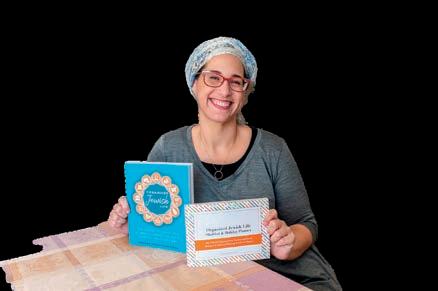











VERY GOOD INVESTMENT!! KATAMON HAYESHENA / Near EMEK


3 rooms, 75m + independent unit, 30m, private entrance, garden in use, calm,
MENDEL 052-8980111
In the heart of BAKA in a calm and pastoral street - spacious 5 rooms, elevator, terrace, store-room, parking, near all amenities
5300000 NIS MICHAEL 052-3202488
ARNONA – 3 rooms that will be transformed into 4 rooms of 90m, 3rd floor with elevator, store-room, parking
ONLY 2550000 NIS
MICHAEL 052-3202488

BAKA - quiet and pleasant little street5 rooms, 175m, on one level, alone upstairs, private entrance, elevator in the apartment, high ceilings
MIKAEL 052-3202488






TALPIOT HAYESHENA / little street – In a new quality project, 5 rooms, 140m, elevator, large garden, occupancy in 2 years
6000000 NIS MICHAEL 052- 3202488
A rare opportunity to purchase a luxury double Sea Facing Apartment in Netanya




6 Rooms Facing South/West
2 Balconies
18th Floor Concierge 24/7
Heated Pool open 7 months of the year Fully Equipped Gym
2 Underground parking spaces
2 Spacious storage Rooms
2 minutes walk from Young Israel Synagogue
2 minutes walk from the beach
On Prestigious Nitza Boulevard, North Netanya




10 Minutes walk from the centre of Netanya
Contact:
Alexandra Stuart
053 822 3513
+972 53 822 3513
By Phone or whatsapp
Price NIS 7.7 Million
EL EVEN DAYS TO GET FREE GIFT & BEFORE FILM PRICES GO UP

A MAN OF MANY WORLDS
SUNDAY EVENING, APRIL 16, 8:00 PM
in the Pelech Girls school – 31 Yehuda St., Baka but ONLY by prior registration and payment
Cost: 100 NIS per person
Ifyou registerbeforePesach,(April5)you’ll receivea Destinygiftworth100NIS!Prices rise afterPesach
SPECIALPRE-PESACHOFFER: PAY FOR TWO ADULT TICKETS AND YOU CAN BRING AS MANY MEMBERS OF YOUR FAMILY (9-99) FOR FREE!!! (Payment and names must be submitted before Pesach)
BECOME A DESTINY SPONSOR OF THE PREMIER AND SUPPORT RABBI WEIN & DESTINY

best seats, light dinner and meet with Rabbi Wein before the film 500 NIS per couple
For ques tions, sign up form s , information, p ayment , email Shir a at abarba nel movie@gmail.com or WhatsApp 0547 - 54 - 36 -18
in the magnificent, mostKosher (HashgachaMehadrinRabbanutGalilTachton,RabbiRubinMeat)
FEATURING RABBI BEREL WEIN AS SCHOLAR IN RESIDENCE (& additional Rabbis)
Five days and Four Nights, Wednesday, May 24 through Sunday, May 28 (Shavuot begins Thursday night)
PRIVATE DINING ROOM, BUFFET & FOR DESTINY GUESTS
Seven Lectures & Shiurim by Rabbi Wein
Full board throughout, outstanding cuisine of highest Kashrut Standard
All night English Shavuot Program with Rabbi Wein, Rabbis & refreshments
Total Torah atmosphere in the hotel, renowned Lavi hospitality
EARLY - BIRD DISCOUNT for those paying in fu ll befo re (1 st da y of ) Pesach
FREE TIYUL or F REE BUS to & from hotel (580 NIS e quivalent)
For registration forms , prices and all questions , call Nachum Amsel at 0522-52-00-31 or write to nachum@jewishdestiny.com


